Welcome to monetize matrix

Advertis
Advertisers
Maximize Your Reach with Precision Audience Monetization Across All Channels and Devices

High-Intent Audience Targeting

Advanced AI Optimization

Multi-Channel Reach

Dedicated Support
publisher
publishers
Monetize Every Device, Anywhere in the World with Our 360° Publisher Solution

Partner with a Leading Programmatic Agency:
Collaborate with industry experts to maximize your revenue potential.

Access the Highest Paying Demand Globally:
Tap into premium demand sources for the best possible CPMs.

Maximize Your Yield:
Optimize your audience monetization for the highest returns.

Flexible Payment Terms:
Enjoy payment flexibility tailored to your financial needs.


24/7 Dedicated Tech Support:
Our expert team is always ready to resolve any issues and ensure seamless operations.

Full Transparency with Real-Time Reporting:
Monitor your performance with clear, up-to-date insights.

Comprehensive Integration Support:
Seamlessly integrate with VAST, RTB, Pre-Bid, SDK, and more.

Access Google Demand via Our MCM Program:
Leverage Google’s demand channels to boost your ad revenue.
Why Choose Monetize Matrix?
Unlock More Revenue—Guaranteed with Monetize Matrix
Partner with Us to Elevate Your Earnings, Whether You’re Monetizing Your Audience or Trafficking High-Value Campaigns
At Monetize Matrix, we guarantee that working with us leads to higher revenue. Our advanced platform is designed to maximize your returns by connecting you with premium demand sources and providing the best tools for audience monetization. Whether you’re a publisher or an advertiser, our commitment to your success means you’ll see more from every campaign. Partner with us, and let’s grow your revenue together. This text would be visually paired with an image of a successful agreement, symbolizing the fruitful partnerships we create.


Let’s grow together!
Power Your Success with Cutting-Edge Technology
Whether You're a Publisher or Advertiser, We've Got You Covered with the Latest Integrations and Devices
At Monetize Matrix, we leverage the most advanced technologies to ensure your campaigns and monetization strategies are always at the forefront of innovation. Our platform supports seamless integrations like VAST, oRTB, and Pre-Bid across all devices—Desktop, Mobile, CTV, OTT, and Tablets. We monetize Video, Display, and Audio inventories with precision, using industry-leading IVT vendors like Pixalate for PreBid and PostBid protection. Partner with us, and experience the future of digital advertising.
This section would be paired with custom-designed visuals, showcasing the logos of the mentioned technologies and partners, emphasizing our commitment to top-tier technological solutions.
Services
Premier Services Tailored for Success
our Partners










SPOTEX





Blogs
Stay Updated with the Latest in Advertising
Recent News and Insights from the Heart of the Ad Industry
The Expanding Landscape of Connected TV Advertising: Trends, Challenges, and Innovations
The digital advertising landscape has been undergoing a significant transformation, with Connected Television (CTV) emerging as a pivotal player in this evolution. As traditional television continues to lose ground to digital platforms, CTV has stepped in to fill the gap, offering advertisers a unique blend of the reach of television with the precision targeting capabilities of digital advertising. However, this shift is not without its challenges and complexities. One of the most pressing issues is the rise of Made for Advertising (MFA) CTV apps, which, despite comprising a small percentage of the total CTV app ecosystem, account for a disproportionately high amount of ad spend. According to a study by Pixalate, MFA CTV apps made up only 2% of all CTV apps in open programmatic advertising but accounted for 1% of global CTV ad spend, translating to approximately $58 million in Q2 2024. This scenario highlights a growing concern among advertisers about the efficacy and transparency of their ad investments.
In analyzing the data, it’s clear that the focus on revenue over user experience is prevalent among advertisers utilizing CTV platforms. This trend mirrors broader industry practices where immediate financial returns often take precedence over sustainable engagement strategies. The Pixalate study underscores this point by revealing that MFA CTV apps are generally newer, averaging an age of 5.9 years compared to 3.2 years for non-MFA CTV apps. This difference in longevity suggests that newer apps might be designed specifically to capitalize on advertising opportunities rather than providing substantive content or user value. The implications of this are twofold: advertisers may be wasting resources on platforms that do not deliver genuine engagement, and users may become increasingly frustrated with intrusive or irrelevant ads, leading to a potential decline in CTV viewership satisfaction.
Moreover, the landscape of CTV advertising is further complicated by the prevalence of ad fraud. In August 2024, Pixalate released data on the top 10 CTV ad fraud types affecting major platforms such as Amazon Fire TV, Roku, Apple TV, and Samsung Smart TV. App spoofing emerged as the most common type of invalid traffic (IVT), accounting for 42% of total IVT on Amazon Fire TV alone. Such fraudulent activities not only distort the effectiveness of advertising campaigns but also erode trust between advertisers and platform providers. On Apple TV, app spoofing constituted 46% of IVT, while proxy IVT impacted the most apps. These statistics indicate a pervasive issue within the CTV advertising ecosystem, necessitating robust solutions to safeguard advertiser interests and ensure accurate audience measurement.
In response to these challenges, companies like Pixalate have taken proactive measures to enhance transparency and accountability in CTV advertising. Their research into bundle IDs, which are used by programmatic advertisers to identify specific apps, highlights the need for standardization to prevent exploitation by ad fraudsters. The lack of consistent guidelines around bundle IDs has created vulnerabilities that can be exploited, leading to inaccurate reporting and inflated ad metrics. By offering mapping APIs and adhering to IAB Tech Lab guidelines, Pixalate aims to provide advertisers with reliable tools to navigate the complex CTV landscape. This initiative reflects a broader industry trend towards enhancing data integrity and reducing the risk of fraudulent activities in digital advertising.
In parallel, companies like The Trade Desk are exploring innovative strategies to secure their position in the CTV market. Known for its demand-side platform that facilitates digital ad buys, The Trade Desk is reportedly developing a connected TV project focused on data acquisition and protection. By leveraging Android’s open-source software, the company aims to create a platform that offers advertisers better insights into viewer behavior and preferences. This move is seen as a strategic response to potential data restrictions similar to those faced by advertisers in the wider internet ecosystem. By gaining more control over CTV data, The Trade Desk hopes to enhance its service offerings and maintain its competitive edge in the rapidly evolving digital advertising landscape.
Another noteworthy development is the collaboration between APMC and Pixalate to improve programmatic ad decision-making. Through their subsidiary, Safe Exchange, APMC seeks to address issues related to trust and transparency in CTV advertising. By utilizing tools like pre-bid blocklists and post-bid analytics, the partnership aims to enhance ad quality and ensure audience protection. This collaboration is particularly significant given the anticipated $14 billion in advertising revenue expected for the 2024 election year. As political campaigns increasingly turn to digital platforms for voter outreach, ensuring the integrity and accuracy of ad placements becomes paramount. APMC’s efforts to provide safe streaming solutions underscore the importance of balancing monetization opportunities with audience and brand protection.
The strategic partnership between Nexxen and Vevo further exemplifies the potential of advanced technology in enhancing CTV advertising. By integrating Nexxen’s supply-side platform, Vevo is expanding its programmatic footprint, offering advertisers access to its extensive library of music videos. This collaboration not only enhances Vevo’s monetization capabilities but also provides advertisers with more targeted and relevant advertising options. The partnership highlights the growing importance of CTV as a medium for reaching diverse audiences, particularly in the realm of music and entertainment. As consumers increasingly turn to streaming platforms for content consumption, advertisers must adapt their strategies to leverage the unique opportunities presented by CTV.
Overall, the CTV advertising landscape is characterized by rapid growth and innovation, driven by advancements in technology and shifting consumer behaviors. However, this growth is accompanied by challenges related to ad fraud, transparency, and user experience. As advertisers continue to navigate this complex environment, collaboration and innovation will be key to unlocking the full potential of CTV. By working together, industry stakeholders can develop solutions that enhance ad effectiveness, protect user privacy, and foster a more sustainable digital advertising ecosystem. The initiatives undertaken by companies like Pixalate, The Trade Desk, APMC, and Nexxen demonstrate a commitment to addressing these challenges and driving positive change in the industry.
Looking ahead, the future of CTV advertising will likely be shaped by ongoing technological advancements and regulatory developments. As privacy concerns and data protection regulations become more prominent, advertisers will need to adapt their strategies to comply with new standards while maintaining effective audience engagement. The integration of artificial intelligence and machine learning in ad targeting and measurement will also play a crucial role in optimizing campaign performance and reducing the risk of fraud. By embracing these technologies, advertisers can gain deeper insights into consumer behavior and preferences, enabling them to deliver more personalized and impactful advertising experiences.
Furthermore, the increasing convergence of CTV with other digital platforms presents new opportunities for cross-channel advertising and audience targeting. As consumers seamlessly transition between devices and platforms, advertisers can leverage integrated data insights to create cohesive and consistent brand experiences. This approach not only enhances brand visibility but also fosters stronger connections with consumers, ultimately driving better business outcomes. As the CTV ecosystem continues to evolve, advertisers must remain agile and forward-thinking to capitalize on emerging trends and opportunities.
In conclusion, the connected TV advertising landscape is a dynamic and rapidly evolving domain that offers significant opportunities for advertisers. However, it also presents challenges that require strategic thinking and collaborative efforts to overcome. By prioritizing transparency, innovation, and user experience, industry stakeholders can create a more effective and sustainable advertising ecosystem. As CTV continues to gain traction, advertisers must stay informed and adaptable to navigate the complexities of this burgeoning market successfully. With the right strategies and partnerships, the future of CTV advertising holds immense promise for brands seeking to engage with audiences in meaningful and impactful ways.
The journey of CTV advertising is just beginning, and its trajectory will undoubtedly be influenced by ongoing technological advancements and shifts in consumer behavior. As advertisers and platform providers work together to address current challenges and seize new opportunities, the potential for CTV to revolutionize the advertising industry becomes increasingly apparent. By fostering a culture of innovation and collaboration, the industry can unlock new levels of creativity and effectiveness, ultimately delivering greater value to both advertisers and consumers. As we look to the future, the promise of CTV advertising is bright, offering exciting possibilities for brands to connect with audiences in ways that were previously unimaginable.
The Complex Landscape of Connected TV Advertising and Its Challenges
The landscape of advertising is constantly evolving, with new platforms and technologies emerging to capture the attention of consumers. One such platform that has gained significant traction in recent years is Connected Television (CTV). CTV refers to any television that can be connected to the internet and access content beyond what is available via traditional cable or satellite services. This includes Smart TVs, gaming consoles, and streaming devices like Roku, Amazon Fire TV, Apple TV, and Samsung Smart TV. The allure of CTV for advertisers lies in its ability to combine the broad reach of traditional television with the precision targeting capabilities of digital advertising. However, as the popularity of CTV grows, so do the challenges associated with it, particularly in terms of ad spend efficiency and user experience.
According to a recent report by Pixalate, the trend of advertising through CTV apps is on the rise, but it often leads to wasted ad spending. The report highlights that CTV apps, especially those flagged as ‘made for advertising’ (MFA), may run ads that are not aligned with advertiser expectations or even compete with the content on screen. This misalignment can result in a poor user experience and diminished returns on ad investments. Pixalate’s data science team conducted an analysis of programmatic advertising on CTV apps across various platforms between April and June 2024. Their findings revealed that while only 2% of CTV apps were flagged as MFA, these apps accounted for 1% of global CTV ad spend, amounting to an estimated $58 million in the second quarter of 2024.
The research further indicates that non-MFA CTV apps tend to be older than their MFA counterparts, with an average age of 5.9 years compared to 3.2 years for MFA apps. Despite their smaller share in the CTV ecosystem compared to websites, MFA apps have a significant long-term impact on both wasted ad spend and user experience. Interestingly, only 1% of global open programmatic ad-exchange spend on MFA CTV apps is directed towards those registered in the United States. This suggests that the issue of ad spend inefficiency is a global phenomenon, affecting advertisers and users worldwide.
Delving deeper into the types of content that attract the most MFA ad spend, the report identifies Movies & TV apps as accounting for 37% of global MFA CTV ad spend, followed by games at 26%. This distribution underscores the diverse range of content available on CTV platforms and the varied interests of users. However, it also highlights the potential for advertisers to inadvertently place their ads in environments that may not align with their brand values or messaging. The challenge for advertisers, therefore, is to navigate this complex landscape and ensure that their ads are reaching the right audience in the right context.
In addition to the challenges posed by MFA apps, the issue of ad fraud is another significant concern for advertisers in the CTV space. In October 2024, Pixalate released data on the top 10 CTV ad fraud types for popular platforms such as Amazon Fire TV, Roku, Apple TV, and Samsung Smart TV. The report covers invalid traffic (IVT) and ad fraud measured across CTV app stores, including the number of affected apps and the share of voice for each IVT type. For instance, app spoofing was identified as the most common IVT type for Amazon Fire TV, impacting 833 apps. Similarly, on Roku, app spoofing was the main IVT type, affecting 1,907 apps.
App spoofing occurs when fraudulent apps disguise themselves as legitimate ones to attract ad spend. This not only results in financial losses for advertisers but also undermines the credibility of the CTV ecosystem. The report also highlights other forms of ad fraud, such as proxy IVT, which accounted for 58% of IVT on Samsung Smart TV. These findings underscore the need for robust measures to detect and prevent ad fraud, ensuring that advertisers’ investments are protected and that users receive a seamless viewing experience.
While the challenges associated with CTV advertising are significant, they are not insurmountable. Advertisers and platform providers must work together to address issues such as ad fraud, MFA apps, and user experience. For example, implementing advanced fraud detection technologies and adopting best practices for ad placement can help mitigate the risks associated with CTV advertising. Additionally, fostering transparency and collaboration between advertisers, publishers, and platform providers can lead to more effective solutions and a healthier advertising ecosystem.
Another aspect of the CTV landscape that warrants attention is the role of platform providers like Roku in shaping user experience and developer opportunities. Roku, for instance, has been criticized for its restrictions on rendezvous linking, a method that allows users to authenticate their accounts via a phone or desktop and automatically log in on their TV app. While this approach offers a more convenient user experience, Roku has limited its use to TV Everywhere apps, negatively impacting both users and developers.
The restrictions imposed by Roku require users to create separate passwords for their accounts on different platforms, leading to confusion and inconvenience, especially for non-tech-savvy users. This has prompted criticism from developers and users alike, who argue that such restrictions are motivated by financial considerations rather than security concerns. By charging a 30% fee for in-app transactions, platform providers like Roku stand to benefit financially from these restrictions, but at the cost of user satisfaction and developer innovation.
As regulators begin to scrutinize these practices, there is growing pressure on platform providers to adopt more user-friendly and developer-friendly policies. For instance, allowing developers to implement on-screen QR codes for authentication could streamline the login process and enhance user experience. Moreover, reducing or eliminating fees for off-platform transactions could encourage greater innovation and competition in the CTV space, ultimately benefiting consumers.
Despite the challenges and criticisms, Roku remains a dominant player in the CTV market, with impressive growth in key metrics such as active accounts, streaming hours, and average revenue per user (ARPU). However, recent trends indicate a slowdown in growth, raising concerns about the company’s future prospects. The decline in ARPU, for instance, suggests that Roku may need to explore new revenue streams and business models to sustain its growth and maintain its competitive edge.
In conclusion, the CTV advertising landscape is complex and dynamic, with numerous challenges and opportunities for advertisers, platform providers, and users. As the industry continues to evolve, stakeholders must work collaboratively to address issues such as ad fraud, MFA apps, and restrictive platform policies. By prioritizing transparency, innovation, and user experience, the CTV ecosystem can unlock its full potential and deliver value to all participants. As we look to the future, the continued growth and success of CTV will depend on the industry’s ability to adapt to changing consumer preferences and technological advancements.
Harnessing the Power of Incentivized Advertising, Shop Campaigns, and AI for Marketing Success
In today’s rapidly evolving digital landscape, businesses are continuously seeking innovative strategies to engage users, drive conversions, and optimize their marketing efforts. One such strategy that has gained significant traction is incentivized advertising. This approach involves offering rewards in exchange for specific user actions, making it an effective tool for boosting app installs, increasing engagement, and driving valuable conversions. The benefits of incentivized ads often outweigh the potential risks when used strategically. By partnering with incentivized advertising networks, brands can achieve substantial returns on their investments through advanced techniques like custom creatives and precise user targeting. Users who engage with incentivized ads are five times more likely to make in-app purchases, underscoring the critical role these ads play in boosting app retention. With numerous incentivized advertising networks available, each offering unique advantages, businesses have ample opportunities to leverage this form of marketing to foster user retention and brand loyalty.
The concept of incentivized advertising has its roots in the gaming vertical, where it accounts for a staggering 90% of gaming ads. This strategy has since expanded into other popular areas such as music streaming, social media, and retailing. Various types of incentivized ads exist, including rewarded video ads and offer walls, which not only enhance user engagement but also improve retention by providing valuable rewards. By offering incentives for engaging with ads, businesses can create a positive association with their brand, fostering long-term loyalty among users. Incentivized ad networks provide advanced analytics and data-driven insights, enabling businesses to maximize user engagement and acquisition while improving conversion rates and return on investment. Despite the potential for low-quality interactions and inflated customer acquisition costs, the strategic use of incentivized ads can effectively boost app installs, increase engagement, and drive valuable conversions.
Shop campaigns represent another powerful tool for businesses aiming to scale customer growth across platforms and countries while maintaining controlled costs. These campaigns allow businesses to target and convert both new and existing customers, with payment required only upon successful conversion on the shop platform. Shop campaigns offer a risk-free option for customer acquisition, providing access to millions of shoppers on top platforms through exclusive offers. Setting up a campaign is quick and straightforward, eliminating the need for new assets or audience building. Businesses maintain full control over their customer acquisition cost, targeted return on ad spend, and daily budget, allowing for precise audience targeting and optimization. Suggested parameters for optimal campaign setup are based on factors such as the brand’s average order volume, industry, and relevancy algorithms, quickly establishing the most effective campaign setup without the need for experimentation.
Successful brands running shop campaigns typically achieve a customer acquisition cost of at least half their average order value. The higher the customer acquisition cost, the better the campaign will rank and convert on the shop platform. Pay-per-sale pricing ensures that businesses never exceed their maximum customer acquisition cost, allowing for multiple campaigns to be run simultaneously with different customer acquisition costs and target return on ad spend for various audiences and countries. By aligning their return on ad spend with broader advertising and business objectives, businesses can optimize their campaigns across platforms. Once acquired, customers’ order data becomes accessible, enabling businesses to create segments and inform future marketing efforts. Additionally, rich branding and customization features on the shop channel can further increase engagement and conversion, enhancing the overall effectiveness of shop campaigns.
AI marketing has emerged as a transformative trend in the marketing industry, offering businesses the ability to optimize their campaigns and improve return on investment (ROI). By gathering data from diverse sources such as social media, website visits, and purchase history, AI-driven insights enable the creation of well-defined audience segments based on factors like age, location, and buying behavior. AI-powered segmentation can enhance conversion rates by up to 30% by targeting the right audience with personalized campaigns. Tailoring marketing messages for each audience segment leads to increased customer satisfaction and sales, while continuous data analysis and learning from customer interactions allow AI to refine targeting in real-time, resulting in improved ROI. Predictive analytics, utilizing machine learning models to analyze historical data, can forecast future actions and behaviors, improving campaign accuracy and boosting conversion rates by up to 20%.
Not all customer segments are created equal, and AI can identify high-converting segments to allocate ad spend more effectively, reducing waste and boosting ROI. By understanding market trends, AI helps adjust marketing strategies proactively to ensure relevance and meet evolving customer needs, leading to a significant increase in sales. AI-generated personalized content for different audience segments reduces content creation time and increases engagement rates by up to 70%. Personalization and relevant messaging make customers feel understood, increasing engagement and leading to higher conversion rates and better ROI. Automating content creation through AI can save substantial time and resources, leading to cost savings and a more efficient use of resources. AI also helps map out the customer journey, pinpointing stages where customers may drop off, allowing for the refinement of marketing strategies and improving retention rates.
Anticipating and addressing customer pain points through AI can enhance the customer experience, increase satisfaction, and identify opportunities for upselling and cross-selling, further boosting ROI. AI-driven customer retention strategies can increase retention rates by providing personalized, real-time content based on customer interactions. Real-time personalization through AI, such as showing customers related products they are more likely to be interested in, can increase conversion rates significantly. Relevant recommendations and personalization through AI can increase customer satisfaction and loyalty. AI enables agility in marketing by making real-time adjustments to campaigns, improving effectiveness and leading to a notable increase in ROI. Programmatic advertising, using AI to automate the ad buying process, saves time and increases efficiency by analyzing market demand and competitor pricing to determine the best ad placements.
Precision targeting through analyzing user behavior in real time can increase click-through rates and conversion rates substantially. By optimizing prices and dynamically adjusting them based on market trends and customer segments, AI can increase both sales and profit margins. In the realm of digital advertising, first-party data plays a crucial role in improving return on ad spend. Billions of users log into meta technologies like Facebook and Instagram daily, presenting an advertiser’s dream. However, reaching these users with relevant ads poses a challenge due to third-party cookie deprecation and data privacy restrictions. A strong data strategy is essential to reach the right customers with the right messages at the right time. First-party data from websites, apps, and other properties can be matched with meta accounts to personalize ads for loyal customers and prospects.
The Meta Conversions API provides a direct connection between marketing technology and Meta’s platform, enhancing data and ad optimization. Event match quality (EMQ) scores, provided by the Meta Conversions API, help determine the likelihood of customer information parameters matching existing meta accounts. By pairing a customer data platform (CDP) with the Meta Conversions API, businesses can improve their EMQ scores and optimize ad performance. Improving data strategy and boosting advertising effectiveness involves gathering customer information parameters such as phone numbers, email addresses, geographic location, and first names. The more parameters collected, the more likely a match can be found with an existing meta account. However, businesses must strike a balance when collecting customer information, ensuring it is sufficient for a match but not too intrusive.
Privacy protocols must be adhered to when collecting customer data, with a focus on collecting email addresses and phone numbers for the best results. A CDP solution with event forwarding, such as Adobe Real-Time CDP and the Meta Conversions API, can inform ad targeting and personalize ads on meta. Analyzing which parameters drive campaign performance and conversions can further improve return on ad spend. Adjusting ad targeting and creating remarketing campaigns based on these parameters can be beneficial. Adobe Real-Time CDP and the Meta Conversions API offer a single dashboard to view campaign activity and EMQ scores, simplifying ad performance optimization. Meta Events Manager provides recommendations to enhance advertising campaigns’ effectiveness. Protecting customer data privacy is essential and can be achieved through methods such as hashing sensitive data.
Adobe and Meta’s solutions aim to connect data and optimize ad targeting to drive better customer experiences and results. By leveraging first-party data, businesses can improve their return on ad spend and achieve greater marketing success. As the digital marketing landscape continues to evolve, the integration of incentivized advertising, shop campaigns, and AI-driven strategies presents a comprehensive approach to achieving marketing goals. By understanding and implementing these strategies effectively, businesses can navigate the complexities of modern marketing, engage users, drive conversions, and ultimately achieve a higher return on investment. As technology advances and consumer expectations shift, staying ahead of the curve with innovative marketing strategies will be key to maintaining a competitive edge in the digital marketplace.
In conclusion, the convergence of incentivized advertising, shop campaigns, and AI-driven marketing tactics offers a powerful toolkit for businesses seeking to optimize their marketing efforts and achieve sustainable growth. By strategically leveraging these approaches, businesses can enhance user engagement, increase conversions, and build lasting relationships with their customers. As the digital landscape continues to evolve, staying informed about emerging trends and technologies will be crucial for marketers looking to remain competitive and drive meaningful results. By embracing innovation and adopting a data-driven approach, businesses can unlock new opportunities for success and thrive in the ever-changing world of digital marketing.
The Digital Revolution: An In-Depth Analysis of Its Impact on Modern Society
The digital revolution, a term that encapsulates the profound transformation brought about by the advent and proliferation of digital technology, has reshaped every facet of modern society. This revolution, which began in the latter half of the 20th century with the development of computers and the internet, has accelerated at an unprecedented pace, affecting how we communicate, work, learn, and entertain ourselves. The impact of this technological upheaval is not confined to any single domain but rather permeates various aspects of life, leading to both remarkable advancements and significant challenges. Understanding the scope and implications of the digital revolution is crucial for navigating the complexities of today’s interconnected world.
At the heart of the digital revolution lies the internet, a global network that has democratized access to information and transformed communication. The internet’s emergence has led to the rise of social media platforms, which have redefined how individuals connect and share information. These platforms have given voice to marginalized communities, enabling grassroots movements and fostering global dialogues. However, they have also facilitated the spread of misinformation and polarized public discourse. The dual nature of social media highlights the broader theme of the digital revolution: while it offers unparalleled opportunities for connection and innovation, it also presents new challenges that require careful consideration and management.
The workplace has undergone a significant transformation due to digital technologies. Automation and artificial intelligence (AI) are revolutionizing industries, increasing efficiency and productivity while simultaneously displacing traditional jobs. This shift necessitates a reevaluation of workforce skills and education, as workers must adapt to new roles that require digital literacy and advanced technical skills. The gig economy, powered by digital platforms, offers flexibility and autonomy but also raises concerns about job security and labor rights. As businesses navigate these changes, they must balance the benefits of technological advancements with the ethical implications of their implementation.
Education, too, has been profoundly affected by the digital revolution. E-learning platforms and online courses have made education more accessible, allowing learners from diverse backgrounds to acquire knowledge and skills at their own pace. The COVID-19 pandemic accelerated the adoption of digital learning tools, highlighting both their potential and their limitations. While digital education offers flexibility and scalability, it also exposes disparities in access to technology and internet connectivity. Ensuring equitable access to digital resources is essential for bridging the educational divide and empowering future generations.
The entertainment industry has been transformed by digital technology, with streaming services and digital content platforms reshaping how we consume media. Traditional forms of entertainment, such as television and cinema, have had to adapt to changing consumer preferences and the rise of on-demand content. The music industry, too, has seen a shift from physical album sales to digital streaming, altering revenue models and artist-audience dynamics. While digital platforms offer artists new opportunities for exposure and creativity, they also raise questions about intellectual property rights and fair compensation.
Healthcare is another domain experiencing a digital transformation. Telemedicine and digital health tools have improved access to medical care, particularly in remote and underserved areas. Wearable devices and health apps empower individuals to monitor their health and make informed decisions. However, the integration of digital technology in healthcare raises concerns about data privacy and the security of sensitive health information. As the healthcare sector embraces digital innovation, it must prioritize patient privacy and ethical considerations to ensure trust and safety.
The digital revolution has also impacted governance and civic engagement. E-government initiatives and digital platforms have streamlined public services and increased transparency. Citizens can now engage with government processes more easily, from paying taxes online to participating in digital consultations. However, the rise of digital surveillance and data collection by governments poses significant privacy concerns. Balancing the benefits of digital governance with the protection of individual rights is a critical challenge for policymakers in the digital age.
The environmental impact of the digital revolution is a growing concern. While digital technology can contribute to sustainability through innovations like smart grids and precision agriculture, it also has a significant carbon footprint. Data centers and electronic waste are major environmental challenges that require sustainable solutions. As society becomes increasingly reliant on digital technology, it must also address the environmental costs and strive for greener alternatives to ensure a sustainable future.
Cybersecurity is a pressing issue in the digital age, as the proliferation of digital devices and networks has increased vulnerability to cyberattacks. Individuals, businesses, and governments face threats ranging from data breaches to ransomware attacks. Strengthening cybersecurity measures and fostering a culture of digital security awareness are essential for protecting sensitive information and maintaining trust in digital systems. As cyber threats evolve, so too must the strategies and technologies used to combat them.
The digital revolution has also influenced cultural and societal norms. The rise of digital communities and virtual interactions has altered traditional notions of identity and belonging. Online spaces offer opportunities for self-expression and community building, but they also present challenges related to digital addiction and mental health. Navigating the balance between digital engagement and well-being is an ongoing challenge for individuals and society as a whole.
As we continue to navigate the digital revolution, it is essential to consider its ethical implications. Issues such as data privacy, algorithmic bias, and digital equity require thoughtful reflection and action. Policymakers, technologists, and society at large must collaborate to develop frameworks and policies that ensure the responsible use of digital technology. By prioritizing ethical considerations, we can harness the potential of the digital revolution to create a more equitable and inclusive future.
In conclusion, the digital revolution is a transformative force that continues to shape the trajectory of modern society. Its impact is vast and multifaceted, influencing everything from communication and commerce to education and entertainment. While the opportunities presented by digital technology are immense, so too are the challenges. As we move forward in this digital age, it is crucial to embrace innovation while remaining vigilant about the ethical, social, and environmental implications of our digital choices. By doing so, we can ensure that the digital revolution serves as a catalyst for positive change and progress.
How the ‘Privacy By Default’ Internet is Transforming the Digital Advertising Landscape
The digital advertising industry is currently undergoing a seismic shift, one that promises to redefine its very foundations. As we edge closer to the era of ‘Privacy By Default,’ stakeholders across the board are grappling with the implications of this transformation. At the heart of this evolution is Google’s plan to phase out third-party cookies by the end of the year, a move that has sent ripples throughout the industry. Third-party cookies have long been the backbone of digital advertising, enabling advertisers to track user behavior across the web and deliver targeted ads. However, growing concerns over privacy and data security have necessitated a reevaluation of these practices. As a result, stakeholders are being compelled to rethink their strategies, with privacy becoming a central focus. This shift marks not just a change in technology but a fundamental transformation in how digital advertising operates, requiring a recalibration of priorities and a renewed commitment to consumer trust.
The phasing out of third-party cookies is not merely a technological update; it is a paradigm shift that signifies the industry’s evolution and growth. As privacy concerns continue to mount, there is a growing recognition that the traditional methods of audience tracking and data collection are no longer tenable. In response, industry players are increasingly prioritizing privacy, with organizations like Prebid leading the charge. Prebid members are focusing on developing solutions that prioritize user privacy while still enabling effective advertising. This shift is not without its challenges, as there will be a significant learning curve involved in navigating the transition away from third-party cookies. Advertisers and publishers alike must adapt to new methodologies and technologies, requiring a concerted effort to educate and equip themselves for the changes ahead.
Independent ad tech companies find themselves at a crossroads, as they will need to collaborate more closely than ever before to develop viable identity solutions. The number of identity providers is expected to decrease, as the market consolidates around those that can offer the most effective and privacy-compliant solutions. This consolidation is likely to lead to more robust and reliable identity solutions, as the remaining providers will be better equipped to meet the demands of the evolving landscape. Moreover, there will be a notable shift towards server-centric solutions for audience attribution and measurement. These server-side technologies promise to offer greater accuracy and reliability, enabling advertisers to measure campaign performance without relying on third-party cookies. This shift is emblematic of the broader trend towards more privacy-conscious advertising practices, reflecting a growing commitment to protecting user data while still delivering value to advertisers.
Interestingly, while traditional digital advertising channels are grappling with these changes, emerging channels such as Connected TV (CTV), audio, and Digital Out-of-Home (DOOH) are less affected by the demise of third-party cookies. These channels have inherently different data collection and attribution models, which do not rely on cookies to the same extent. As a result, they are well-positioned to thrive in the ‘Privacy By Default’ era. This presents a unique opportunity for innovation and interoperability within these channels, as advertisers seek to leverage their potential. The growth of CTV, audio, and DOOH is expected to accelerate, driven by the increasing demand for privacy-compliant advertising solutions. This shift is likely to foster a new wave of creativity and collaboration, as industry players explore novel ways to engage audiences in these emerging formats.
The role of Prebid and Supply-Side Platforms (SSPs) is set to become increasingly important in constructing measurement data in this new landscape. As third-party cookies are phased out, the responsibility for audience attribution is likely to shift from the buy side to the sell side. This means that publishers and advertisers will need to work more closely together, leveraging first-party data to create accurate and effective measurement solutions. First-party data, which is collected directly from users with their consent, offers a more privacy-conscious alternative to third-party cookies. By harnessing this data, publishers and advertisers can develop insights that drive meaningful engagement and deliver value to both consumers and brands. This collaborative approach is essential for navigating the complexities of the ‘Privacy By Default’ internet, as it enables stakeholders to align their efforts and create a more sustainable and privacy-conscious advertising ecosystem.
Industry-wide collaboration is not just a necessity but a strategic imperative for laying the groundwork for long-term revenue growth in the digital advertising space. As the industry transitions to a ‘Privacy By Default’ model, the need for collective standards and shared solutions becomes increasingly apparent. By working together, industry players can tackle common challenges and develop frameworks that promote transparency, accountability, and trust. This collaborative spirit is essential for driving innovation and ensuring the continued growth of the digital advertising industry. It also underscores the importance of building relationships and fostering dialogue between different stakeholders, from advertisers and publishers to technology providers and regulatory bodies. By embracing collaboration, the industry can create a more resilient and adaptable ecosystem that is better equipped to navigate the complexities of the modern digital landscape.
Mobile, in-app, and emerging channels like CTV are poised to play a crucial role in the future of programmatic advertising. As third-party cookies become a thing of the past, these channels offer alternative avenues for reaching and engaging audiences. Mobile and in-app advertising, in particular, have long been at the forefront of privacy-conscious practices, leveraging device identifiers and first-party data to deliver personalized experiences. Similarly, CTV offers a rich and immersive advertising environment that is well-suited to the demands of the ‘Privacy By Default’ internet. By embracing these channels, advertisers can continue to deliver impactful campaigns while respecting user privacy. This shift is likely to drive further investment and innovation in mobile, in-app, and CTV advertising, as industry players seek to capitalize on their potential.
Server-side technology is emerging as a critical component of the new digital advertising landscape, offering the scalability and efficiency needed for seamless ad delivery. As the industry moves away from third-party cookies, server-side solutions provide a more reliable and privacy-conscious alternative for audience attribution and measurement. These technologies enable advertisers to deliver ads at scale, without compromising on user privacy or data security. However, the lack of uniform standards in emerging channels presents a challenge that must be addressed. To fully realize the potential of server-side technology, industry players must work together to develop common standards and protocols that ensure interoperability and consistency across different platforms and devices. This collaborative effort is essential for unlocking the full potential of server-side solutions and driving growth in the digital advertising industry.
Transparency and collaboration are key to driving growth and revenue in the digital advertising industry, particularly as it navigates the transition to a ‘Privacy By Default’ model. By fostering a culture of openness and cooperation, industry players can build trust with consumers and create a more sustainable advertising ecosystem. Transparency is essential for ensuring accountability and building confidence in the industry’s practices, while collaboration enables stakeholders to pool their resources and expertise to tackle common challenges. Together, these principles form the foundation of a more resilient and adaptable digital advertising landscape, one that is better equipped to meet the demands of the modern consumer. By embracing transparency and collaboration, the industry can continue to innovate and grow, while respecting the privacy and preferences of its audience.
The future of the digital advertising industry relies on building collective standards and collaboratively tackling common challenges. As the industry moves towards a ‘Privacy By Default’ model, the need for shared solutions and frameworks becomes increasingly apparent. By working together, industry players can develop standards that promote transparency, accountability, and trust, while ensuring consistency and interoperability across different platforms and devices. This collaborative approach is essential for driving innovation and ensuring the continued growth of the digital advertising industry. It also underscores the importance of building relationships and fostering dialogue between different stakeholders, from advertisers and publishers to technology providers and regulatory bodies. By embracing collaboration, the industry can create a more resilient and adaptable ecosystem that is better equipped to navigate the complexities of the modern digital landscape.
In conclusion, the transition to a ‘Privacy By Default’ internet is reshaping the digital advertising industry in profound ways. As third-party cookies are phased out, stakeholders are being compelled to rethink their strategies and prioritize privacy. This shift is not without its challenges, but it also presents a unique opportunity for innovation and growth. By embracing collaboration, transparency, and server-side technology, the industry can build a more sustainable and privacy-conscious advertising ecosystem. Emerging channels like CTV, audio, and DOOH offer exciting new opportunities for engagement, while mobile and in-app advertising continue to lead the way in privacy-conscious practices. As the industry navigates this transformation, the importance of collective standards and shared solutions cannot be overstated. By working together, industry players can create a more resilient and adaptable digital advertising landscape, one that is better equipped to meet the demands of the modern consumer.
Ultimately, the success of the digital advertising industry in the ‘Privacy By Default’ era will depend on its ability to balance the needs of advertisers and consumers while respecting privacy and data security. This requires a concerted effort to develop innovative solutions that deliver value to all stakeholders, from advertisers and publishers to consumers and regulators. By prioritizing privacy and collaboration, the industry can continue to thrive and evolve, creating a more sustainable and ethical digital advertising ecosystem for the future. As we look ahead, the importance of building trust and fostering dialogue between different stakeholders cannot be overstated. By working together, the digital advertising industry can navigate the challenges of the ‘Privacy By Default’ internet and emerge stronger and more resilient than ever before.
Navigating the Future of Media Monetization: AI-Driven Strategies and Ethical Practices
The digital media landscape is undergoing a seismic shift, driven by the integration of artificial intelligence (AI) and advanced analytics into content delivery and monetization strategies. At the forefront of this transformation are companies like Castify.ai and MediaMelon, which are leveraging AI-driven analytics to revolutionize connected TV (CTV) and over-the-top (OTT) media monetization. These platforms are not only enhancing the efficiency of ad targeting but are also redefining how content is curated and delivered to audiences. The CEO of Castify.ai, Gal Turjeman, has been vocal about the importance of transparency and ethical practices in this rapidly evolving industry. He emphasizes that legal disclaimers, such as those clarifying non-affiliation with major media entities like KTLA or Nexstar Media Inc., play a crucial role in maintaining the integrity and credibility of media sources. In an age where content can be easily disseminated without proper attribution, these disclaimers serve as a safeguard against potential misinterpretation and legal liability.
As political ad spending surges, particularly in the realm of CTV, the need for strategic partnerships and expert guidance becomes paramount. Political advertisers are increasingly turning to CTV for its robust targeting capabilities and local reach, making it an indispensable tool in election cycles. Projections indicate a 33% increase in CTV ad spending compared to previous midterm elections, underscoring the platform’s growing significance. However, navigating the complex ecosystem of streaming inventory requires a deep understanding of the various players and technologies involved. Political agencies are advised to employ strategies like supply path optimization (SPO) and streamline their supply partners to maximize efficiency. While platforms like Netflix may eschew political ads, others, such as free ad-supported streaming television (FAST), offer cost-effective alternatives that can significantly enhance voter engagement.
The intersection of AI and programmatic advertising marks a new era of efficiency in the cookieless advertising landscape. Advertisers and publishers are now more confident than ever in their ability to adapt to these changes, utilizing AI tools to personalize and target their ads with unprecedented precision. This shift is evident across various platforms, including TV, OTT, CTV, live streaming, and social media. Predictions suggest that spending on AI-powered advertising campaigns and software will soar to $1.3 trillion over the next decade. Much of this innovation is expected to occur on the supply side, enabling brands to deliver hyper-targeted ads to their audiences. Programmatic advertising, a complex amalgamation of algorithms, automation, and predictive intelligence, is being transformed by the incorporation of AI and machine learning capabilities, simplifying and enhancing targeting and personalization for both publishers and advertisers.
In the realm of programmatic advertising, AI is predominantly utilized in four key areas, with a fifth element—personalization—emerging as a significant focus in recent years. Adtech executives emphasize the importance of direct relationships with consumers and the collection of first-party data, with consent, as essential components for success in the cookieless era. Contextual targeting, where ads are placed based on the content being viewed rather than user behavior, is gaining traction as a viable strategy. AI semantic algorithms play a pivotal role in this approach, analyzing content to ensure alignment with a brand’s message while excluding non-brand suitable contexts. Furthermore, machine learning algorithms facilitate real-time ad optimization, adjusting placements, formats, and targeting based on performance data, thereby enhancing campaign outcomes.
Investing in privacy-centric technologies that adhere to regulations is crucial for delivering personalized experiences without compromising user privacy. The adoption of a test-and-learn approach is necessary in the evolving advertising landscape, as no single solution is likely to replace cookies entirely. AI’s ability to optimize campaign outcomes is proving to be game-changing in the adtech industry, bridging the gap between theoretical possibilities and practical realities. Companies are increasingly training their models using AI and deep learning, relying on vast amounts of consistent data to refine their strategies. For programmatic campaigns, AI offers the capability to generate intelligent ad content, provide strategic bidding strategies, and improve performance measurement, setting a new standard in the programmatic landscape.
The role of Gen AI tools in programmatic advertising cannot be overstated. These tools integrate AI into creative processes, bidding strategies, and performance measurement, pushing the boundaries of what is possible in digital advertising. Retailers are encouraged to focus on building a robust first-party data strategy to effectively reach customers in the cookieless era. Ad fraud detection and prevention, smart automation with personalization, and AI-powered targeting and measurement are key areas where AI is being harnessed to enhance programmatic advertising. The synergy between AI and programmatic technology is not only streamlining operations but also paving the way for more personalized and effective advertising strategies.
As the digital media landscape continues to evolve, the importance of ethical practices and transparency in media consumption cannot be overstated. Gal Turjeman’s insights underscore the necessity of disclaimers in maintaining trust between consumers and media sources. These disclaimers are not intended to undermine the validity or quality of the content but rather to provide context and ensure readers are aware of the source of the content. In today’s fast-paced digital environment, where information can have a significant impact on individuals and society, it is imperative for consumers to be critical and discerning when consuming media, particularly online. Disclaimers serve as a starting point for readers to conduct their own research and form their own opinions, fostering a more informed and engaged audience.
While disclaimers may not be a perfect solution, they represent an important step towards ethical and responsible media practices. Media companies bear a responsibility to their readers and viewers to provide accurate and transparent information, including the use of disclaimers to clarify the source and intent of their content. Ultimately, maintaining trust and credibility in the media industry hinges on these ethical considerations. As the integration of AI and advanced analytics continues to reshape media monetization strategies, the focus on transparency and ethical practices will remain a cornerstone of the industry’s evolution.
The future of media monetization is inextricably linked to the successful integration of AI-driven strategies and ethical practices. Companies like Castify.ai and MediaMelon are leading the charge in transforming CTV and OTT media monetization through AI-driven analytics and contextual curation exchanges. By leveraging these advanced technologies, they are not only enhancing the efficiency of ad targeting but also redefining how content is curated and delivered to audiences. As political ad spending continues to rise, particularly in the realm of CTV, the need for strategic partnerships and expert guidance becomes increasingly important. Embracing fragmentation and streamlining it through a single point of purchase is emerging as a winning strategy for reaching persuadable voters at scale without incurring additional costs.
In conclusion, the digital media landscape is poised for continued transformation as AI-driven strategies and ethical practices take center stage. The integration of AI and advanced analytics into media monetization strategies is revolutionizing the way content is delivered and consumed. Companies like Castify.ai and MediaMelon are at the forefront of this transformation, leveraging AI-driven analytics to enhance the efficiency of ad targeting and redefine content curation. As political ad spending surges, particularly in the realm of CTV, the importance of strategic partnerships and expert guidance cannot be overstated. By embracing fragmentation and streamlining it through a single point of purchase, advertisers can effectively reach persuadable voters at scale without incurring additional costs.
Looking ahead, the successful integration of AI-driven strategies and ethical practices will be crucial in navigating the future of media monetization. As the digital media landscape continues to evolve, the focus on transparency and ethical practices will remain a cornerstone of the industry’s evolution. By maintaining trust and credibility through ethical considerations and the use of disclaimers, media companies can ensure that they are providing accurate and transparent information to their readers and viewers. Ultimately, the future of media monetization hinges on the successful integration of AI-driven strategies and ethical practices, paving the way for a more informed and engaged audience.
As we move forward, the potential of AI-driven strategies in media monetization is immense. The combination of AI and programmatic advertising is creating a new era of efficiency in the cookieless advertising landscape, with advertisers and publishers increasingly confident in their ability to adapt to these changes. By leveraging AI tools to personalize and target their ads with unprecedented precision, companies can deliver hyper-targeted ads to their audiences across various platforms, including TV, OTT, CTV, live streaming, and social media. With predictions suggesting that spending on AI-powered advertising campaigns and software will reach $1.3 trillion over the next decade, the future of media monetization is undoubtedly bright.
Navigating the Complex Landscape of CTV Programmatic Advertising: Insights from Pixalate and Industry Trends
The landscape of connected TV (CTV) advertising is undergoing a transformative shift, driven by technological advancements and evolving consumer preferences. At the forefront of this evolution is Pixalate, a global platform renowned for its expertise in privacy compliance, ad fraud prevention, and digital ad supply chain data intelligence. In August 2024, Pixalate released its highly anticipated Top 100 Connected TV (CTV) Bundle ID Rankings, which offers a comprehensive analysis of global open programmatic ad spend across major platforms such as Roku, Amazon Fire TV, Samsung Smart TV, and Apple TV. This research, based on over 1.8 billion impressions across more than 5,000 CTV apps, provides invaluable insights into the current state of programmatic advertising and the pivotal role played by bundle IDs in identifying specific apps.
Bundle IDs are critical identifiers in the CTV advertising ecosystem, used by programmatic advertisers to pinpoint specific apps for ad placement. However, the lack of standardization around the syntax of these bundle IDs has led to confusion and opened the door for ad fraudsters to exploit vulnerabilities. Pixalate addresses this challenge through its Bundle ID to app store ID mapping APIs, which ensure consistent handling of bundle IDs, thereby facilitating accurate tracking, measurement, and reporting. The importance of maintaining a clean app inventory cannot be overstated, as publishers strive to avoid invalid traffic and maintain trust with advertisers. Pixalate’s efforts are further supported by guidelines issued by the IAB Tech Lab, which advocate for the use of app IDs and OpenRTB 2.6 to support channel and network object information, thereby preventing the overloading of the bundle ID field.
Pixalate’s research reveals that the top bundle IDs in the CTV space are predominantly owned by major streaming services and media companies, underscoring the increasing influence of these entities in the advertising landscape. The top four bundle IDs, owned by Roku, Netflix, Fox, and Hulu, dominate the rankings, reflecting their significant impact on programmatic advertising. Other popular bundle IDs within the top 20 include Disney+, Amazon Prime Video, and Tubi TV, further highlighting the prominence of well-established streaming services. Collectively, the top 100 bundle IDs account for approximately 62% of all impressions across the analyzed CTV apps, demonstrating the concentrated nature of ad spend in this sector.
In parallel with Pixalate’s findings, the advertising strategies of industry giants such as Netflix are undergoing significant transformations. Netflix’s recent decision to remove Peter Naylor, its top ad liaison, marks a pivotal moment as the company shifts towards programmatic advertising to enhance its ad sales capabilities. Since announcing its ad business in 2022, Netflix has faced challenges in building its ad technology, resulting in multiple strategic changes. The company’s collaborations with Google, The Trade Desk, and Magnite signal a move towards programmatic ad buying, a shift from its initial vision of premium, white-glove dealmaking. Despite these efforts, Netflix’s ad revenue is not expected to contribute significantly to its bottom line in the near future, as the company continues to navigate the complexities of monetizing its growing ad inventory.
The collaboration between Safe Exchange, owned by APMC, and Pixalate exemplifies the industry’s commitment to enhancing programmatic ad decision-making. This partnership aims to increase trust and transparency in programmatic advertising, leveraging Pixalate’s tools, including pre-bid blocklists and post-bid analytics. Daniel Riddell, CTO of APMC, views Pixalate as a natural choice for enhancing data points and protecting audiences. Kidoodle.tv, an APMC-owned CTV app, ranks highly on Pixalate’s CTV Publisher Trust Index, reflecting the positive trajectory of APMC’s initiatives. As the industry anticipates a $14 billion estimated ad spending for the election year, Safe Exchange is poised to capitalize on unique monetization opportunities while ensuring ad safety through products like Adcurate, Adsource, and Adfilter.
Looking ahead to 2024, the ad tech industry is poised for further evolution, with a renewed focus on premium video content. As linear and digital video converge, buyers are increasingly demanding high-quality and brand-safe ad inventory, holding premium video to a higher standard to enhance the viewer experience. The launch of AMC Networks’ programmatic addressable capability marks a significant breakthrough, paving the way for a substantial increase in programmatically available addressable ad inventory. Moreover, the emphasis on authenticated identity is set to revolutionize audience targeting and measurement, enabling more accurate and effective advertising strategies.
The definition of “TV” has become increasingly complex and blurred, with digital video content now considered part of the broader TV ecosystem. Advertisers are expanding their budgets to include platforms like YouTube, further blurring the lines between traditional and digital video. In 2024, advertisers will prioritize high-quality video content, regardless of where and how it is accessed. Programmatic TV advertising will continue to grow, offering advertisers the opportunity to combine the engaging, premium environment of TV with precise targeting capabilities. However, the accuracy of data used for audience targeting remains a concern, with nearly half of the data being incorrect. As media costs rise during an election and Olympics year, advertisers will need to scrutinize their data and adjust their programmatic TV buying strategies accordingly.
Pixalate’s release of expanded global seller trust indexes for Q2 2024 provides a comprehensive view of the programmatic ad landscape. These rankings, based on 88 billion open programmatic advertising impressions, offer insights into the strengths and weaknesses of ad sellers across 140+ countries. By utilizing supplychain object (SCO) data, Pixalate’s indexes highlight emerging sellers and promote economic fairness and competition within the industry. The inclusion of quality-based metrics such as supply path optimization (SPO) and SCO verification ensures a holistic evaluation of ad sellers, addressing concerns about monopolization and encouraging a diverse and competitive market.
As the industry continues to evolve, the role of ad servers is becoming increasingly important. To survive in the competitive market, ad servers must remain independent and transparent, moving beyond simply counting clicks and impressions. The adoption of open measurement and attention metrics is crucial for taming the wild west of connected TV, providing advertisers with better measurement tools to evaluate campaign effectiveness. While attention metrics have been a focus in the past, they will not be the sole indicator of success in CTV advertising. Instead, a combination of metrics and insights will be necessary to navigate the complexities of the programmatic landscape.
The collaboration between Safe Exchange and Pixalate underscores the industry’s commitment to enhancing programmatic ad decision-making. By leveraging Pixalate’s tools and expertise, Safe Exchange aims to increase trust and transparency in programmatic advertising, ensuring that ad decisioning better serves global audiences. This partnership is a testament to the industry’s dedication to providing secure and lucrative opportunities for publishers and advertisers, fostering a more trustworthy and efficient ad ecosystem.
In conclusion, the CTV programmatic advertising landscape is characterized by rapid innovation and evolving strategies. Pixalate’s research and insights provide valuable guidance for navigating this complex environment, highlighting the importance of bundle IDs, maintaining a clean app inventory, and leveraging advanced technologies for accurate tracking and measurement. As industry leaders like Netflix and APMC continue to adapt their advertising strategies, the collaboration between Safe Exchange and Pixalate exemplifies the industry’s commitment to enhancing programmatic ad decision-making and fostering trust and transparency. With a renewed focus on premium video content and the convergence of linear and digital video, the future of CTV advertising holds immense potential for growth and innovation.
Ultimately, the success of programmatic advertising in the CTV space hinges on the ability to balance technological advancements with ethical considerations, ensuring that ad decisioning serves the best interests of both advertisers and audiences. As the industry moves forward, the continued collaboration between key players and the adoption of innovative solutions will be crucial in shaping the future of programmatic advertising, driving growth, and delivering value to all stakeholders involved.
The Evolution of Streaming: How Roku and Disney are Shaping the Future of Television Advertising
In recent years, the landscape of television and advertising has undergone a seismic shift, driven largely by the rapid evolution of streaming platforms and the rise of connected TV (CTV) and over-the-top (OTT) content. At the forefront of this transformation are industry giants like Roku and Disney, who are not only redefining how we consume content but also how advertisers reach audiences. Roku’s impressive third-quarter results, highlighted by a 20% revenue growth and a significant increase in active accounts, underscore its role as a major player in this new era of television. The launch of Roku-branded smart TVs has propelled its TV sales unit growth beyond industry expectations, contributing to a total net revenue of $912 million for Q3, up from $761 million the previous year. This growth is not just a testament to Roku’s robust business model but also an indicator of the broader trends shaping the future of television.
Roku’s success can be attributed to several key factors, including strong performance in content distribution and video advertising. Device revenue alone saw a remarkable 33% year-over-year growth, reaching $125 million. This surge in revenue is indicative of the growing consumer demand for streaming devices and platforms that offer a seamless and personalized viewing experience. Moreover, Roku’s platform revenue, which includes digital advertising sales and content distribution, grew by 18% from the previous year, totaling $787 million. Despite a challenging advertising market, Roku has managed to rebound strongly in video advertising, thanks in part to its diversification of advertiser demand sources and expanding partnerships. By integrating with over 30 programmatic partners, Roku has seen meaningful growth in spending through automated demand sources, further solidifying its position as a leader in the streaming space.
One of the most intriguing developments in the world of streaming and advertising is the advent of shoppable TV ads, a concept that Disney is actively exploring through its Gateway Shop initiative. Launched at the Consumer Electronics Show in Las Vegas, this limited beta test introduces a new ad format that delivers advertisements directly to users’ phones or emails while they watch Disney content. This innovative approach aims to provide targeted offers and promotions to viewers via their mobile devices, thereby enhancing the overall viewing experience and opening new revenue streams for advertisers. Disney’s foray into shoppable TV ads is part of a broader trend among companies like Walmart, NBCUniversal, and Amazon, who are all experimenting with similar concepts to capitalize on the growing popularity of connected TV and OTT content.
The rise of t-commerce, or television-based commerce, is transforming the way consumers interact with ads and make purchases. Enabled by advanced TV user interfaces and technologies, t-commerce allows viewers to make purchases in response to advertisements or product placements during a television show. These transactions can be completed using interactive features on the TV or through a second-screen app on a mobile or tablet device. According to data from Parks Associates, a staggering 88% of internet households shop online at least once a month, with 62% using their mobile phones and 60% using their computers. This shift in consumer behavior presents a lucrative opportunity for streaming services like Roku, Amazon, Peacock, and Netflix, who are actively engaging in t-commerce ads to boost their advertising revenue.
Roku’s commitment to innovation and partnership is evident in its recent collaborations with major brands and advertisers. The company has formed strategic partnerships with Best Buy and Walmart, allowing advertisers like Walmart to utilize Roku’s city integrations and shoppable ads. Additionally, Roku’s new partnership with Spotify introduces video ads on Roku devices, further expanding its advertising capabilities. According to Beachfront, Roku accounts for nearly 40% of CTV ad impressions, underscoring its dominance in the connected TV advertising market. With net active accounts increasing by 2.3 million to a total of 75.8 million, and streaming hours reaching 26.7 billion, Roku’s user-friendly experience continues to drive engagement and attract advertisers seeking to reach a broad and diverse audience.
As the streaming landscape becomes increasingly competitive, companies like Roku and Disney are focused on maximizing revenue through subscriptions and advertising. In the case of Roku, its revenue model is based on advertising and revenue sharing with thousands of apps on its platform. This approach has proven successful, as evidenced by the significant growth in advertising revenue tied to Roku’s own AVOD platform, the Roku Channel. A growing portion of subscription revenue is also coming from the Roku Channel, highlighting Roku’s strategic shift towards becoming more than just a neutral platform for hosting third-party apps. This shift is further exemplified by Roku’s talks with major studios to add original content to the Roku Channel, positioning it as a formidable competitor in the streaming market.
Despite its success, Roku’s stance as a neutral streaming app arbitrator is being challenged by ongoing distribution issues with AT&T-WarnerMedia and Comcast-NBCUniversal. Writer Jared Newman argues that these issues stem from Roku’s shift away from neutrality, as it leverages services like HBO Max and Peacock to drive usage of the Roku Channel. While Roku’s CFO Steve Louden maintains that the company is open to having all content on the platform, the reality is that Roku plays a larger role in the content ecosystem than simply hosting third-party apps. As Roku continues to negotiate with major studios and expand its content offerings, its position as a neutral platform may become increasingly difficult to maintain.
In the broader context of the streaming and OTT industry, connected TV and OTT represent the digital transformation of traditional linear TV. As streaming platforms and mobile viewing continue to rise, marketers are presented with new opportunities to reach households through various devices, including smart TVs. Martech, a reliable source for connected TV and OTT content, offers up-to-date resources and insights into the latest trends and innovations in the industry. With the integration of advanced technologies like IRCode, which makes ads scannable and shoppable on out-of-home, video, and TV platforms, brands can leverage contextual strategies and CTV to boost their campaigns and engage with consumers in new and meaningful ways.
The importance of a balanced approach to linear and streaming TV in modern marketing campaigns cannot be overstated. A recent study found that viewership on connected TV has increased by 5% year-over-year, with average session time rising by 7%. This growth highlights the need for advertisers to adapt their strategies to the evolving media landscape and explore practical AI applications for their campaigns. Connected TV has surpassed AI as a top consumer interest, indicating a shift in consumer preferences towards more interactive and engaging viewing experiences. When parents and children watch ads together on connected TV, there is a positive impact on engagement, further emphasizing the potential of connected TV as a powerful advertising medium.
As the streaming industry continues to evolve, advertisers and publishers are increasingly interested in connected TV and digital video. Top publishers and adtech companies are providing a glimpse into the future of advertising and viewing experiences for connected consumers, with innovations like IAB Tech Lab’s new creative ID standard aimed at improving the ad experience across the adtech ecosystem. By giving publishers more control over ad placement and badging, these updates enhance the effectiveness of advertising campaigns and ensure that ads resonate with audiences. As connected TV and OTT content become more prevalent, advertisers must remain agile and responsive to the changing landscape to maximize their reach and impact.
Looking ahead, the future of television advertising will be shaped by the continued evolution of streaming platforms and the integration of new technologies. Companies like Roku and Disney are at the forefront of this transformation, driving innovation and redefining the relationship between content, consumers, and advertisers. As the lines between traditional and digital media continue to blur, the ability to deliver personalized and interactive ad experiences will be crucial for capturing audience attention and driving engagement. With advancements in t-commerce and shoppable TV ads, the potential for monetizing content and enhancing the viewer experience is greater than ever, paving the way for a new era of television advertising.
In conclusion, the rise of streaming platforms like Roku and Disney’s exploration of shoppable TV ads represent a significant shift in the television advertising landscape. As consumers increasingly turn to connected TV and OTT content for their entertainment needs, advertisers must adapt to the changing media environment and embrace new technologies to effectively reach and engage audiences. By leveraging the power of t-commerce, strategic partnerships, and innovative ad formats, companies can unlock new revenue streams and deliver compelling ad experiences that resonate with viewers. As the industry continues to evolve, the future of television advertising will be defined by those who can successfully navigate the complexities of the digital age and harness the full potential of streaming technology.
The Evolving Landscape of Digital Journalism: Challenges and Opportunities
The digital revolution has transformed the landscape of journalism in ways that were unimaginable just a few decades ago. The rise of the internet has democratized information, allowing for an unprecedented flow of news and data across borders and cultures. However, this transformation has also brought with it a host of challenges that have forced traditional media outlets to adapt or risk obsolescence. At the heart of this evolution is the changing nature of content consumption, driven by technological advancements and shifting consumer preferences. In this new era, journalists are not only storytellers but also digital strategists who must navigate the complexities of online platforms to reach their audiences effectively.
One of the most significant changes in digital journalism is the way content is delivered and consumed. Gone are the days when people would wait for the morning newspaper or the evening news broadcast. Today, news is available at our fingertips 24/7, thanks to smartphones, tablets, and laptops. This shift has led to the rise of real-time reporting, where journalists are expected to deliver news as it happens. The pressure to be first can sometimes lead to the dissemination of unverified information, posing ethical challenges for journalists who must balance speed with accuracy. Furthermore, the proliferation of social media has blurred the lines between professional journalism and citizen reporting, raising questions about credibility and accountability.
In addition to changes in content delivery, the financial model of journalism has undergone a seismic shift. Traditional revenue streams such as print subscriptions and advertising have dwindled, forcing media organizations to explore new ways to monetize their content. Paywalls, sponsored content, and native advertising have become commonplace as publishers seek to generate revenue in a digital-first world. However, these strategies come with their own set of challenges, including the risk of alienating readers who are accustomed to free content and the potential for conflicts of interest when editorial independence is compromised by commercial considerations. As such, finding a sustainable business model remains a pressing concern for many news organizations.
Amidst these challenges, the role of data in journalism has become increasingly important. Data-driven journalism, or “data journalism,” involves using data analysis and visualization techniques to uncover stories and provide deeper insights into complex issues. This approach allows journalists to tell more compelling stories by providing context and evidence to support their narratives. However, data journalism requires a new set of skills, including data literacy and proficiency in analytical tools, which may not be part of the traditional journalist’s toolkit. As a result, newsrooms are investing in training programs and hiring specialists to bridge this gap and ensure that their teams are equipped to leverage data effectively.
Another key development in digital journalism is the rise of multimedia storytelling. With the advent of high-speed internet and advanced mobile devices, audiences now expect rich, interactive content that goes beyond text. Video, audio, infographics, and interactive elements have become integral components of modern journalism, enhancing the storytelling experience and engaging audiences in new ways. This shift has prompted news organizations to invest in multimedia production capabilities and experiment with innovative formats such as virtual reality and augmented reality. However, creating high-quality multimedia content can be resource-intensive, requiring significant investments in technology and talent.
Social media platforms have also become critical distribution channels for news content, enabling journalists to reach wider audiences and engage with readers in real-time. Platforms like Twitter, Facebook, and Instagram allow journalists to share their work, gather feedback, and participate in conversations with their audience. However, the reliance on social media for distribution also presents challenges, including the risk of misinformation, algorithmic biases, and the loss of control over how content is presented and consumed. To navigate these challenges, journalists must develop a deep understanding of social media dynamics and employ strategies to amplify their reach while maintaining the integrity of their reporting.
In response to the evolving digital landscape, news organizations are embracing innovation and experimentation. From launching podcasts and newsletters to developing mobile apps and personalized content experiences, media outlets are exploring new ways to engage audiences and stay relevant. Collaborative journalism initiatives, where news organizations partner with each other or with tech companies, are also gaining traction as a means to pool resources and expertise. These collaborations can lead to groundbreaking investigative reports and in-depth coverage of complex issues that would be difficult for a single organization to tackle alone.
Despite the challenges, the digital age has also opened up new opportunities for journalists to connect with their audiences and make a positive impact. Crowdsourcing and audience engagement initiatives allow journalists to involve their readers in the reporting process, gathering valuable insights and perspectives that enrich their stories. Additionally, the internet has enabled the rise of niche journalism, where specialized outlets cater to specific interests and communities, providing in-depth coverage that may not be available from mainstream sources. This diversity of voices and perspectives contributes to a more informed and engaged public.
The global nature of the internet has also facilitated cross-border collaborations, allowing journalists to work together on international investigations and share resources and expertise. These collaborations have led to significant exposés and accountability journalism that have had a profound impact on society. However, working across borders also presents challenges, including legal and cultural differences, language barriers, and the need to navigate complex geopolitical landscapes. Despite these hurdles, the benefits of collaboration often outweigh the challenges, leading to more comprehensive and impactful journalism.
As digital journalism continues to evolve, ethical considerations remain at the forefront of the conversation. Issues such as privacy, data security, and the responsible use of technology are becoming increasingly important as journalists navigate the digital landscape. The rise of artificial intelligence and machine learning in journalism also raises ethical questions about transparency, bias, and the potential for automation to replace human judgment. To address these concerns, journalists and media organizations must adhere to ethical standards and engage in ongoing discussions about the implications of new technologies on their work.
Looking ahead, the future of digital journalism will likely be shaped by continued technological advancements and changing audience expectations. Emerging technologies such as blockchain, artificial intelligence, and immersive media have the potential to revolutionize the way news is produced, distributed, and consumed. However, the successful integration of these technologies will require careful consideration of ethical, legal, and practical implications. As the industry navigates these changes, the core principles of journalism—accuracy, fairness, and accountability—will remain essential to maintaining public trust and fulfilling the vital role of journalism in a democratic society.
In conclusion, the digital transformation of journalism presents both challenges and opportunities for media organizations and journalists. While the landscape is constantly evolving, the fundamental mission of journalism—to inform, educate, and hold power to account—remains unchanged. By embracing innovation, adapting to new technologies, and upholding ethical standards, journalists can continue to thrive in the digital age and contribute to a more informed and engaged society. As we move forward, it is crucial for journalists, media organizations, and the public to work together to navigate the complexities of the digital world and ensure that journalism remains a force for good.
Harnessing AI and First-Party Data for Enhanced Marketing ROI
In the rapidly evolving landscape of digital marketing, businesses are increasingly turning to artificial intelligence (AI) and first-party data strategies to enhance their return on investment (ROI). The integration of AI in marketing is not just a trend but a transformative approach that allows companies to personalize customer experiences, optimize advertising spend, and improve overall engagement. By leveraging AI-driven insights, businesses can tailor their campaigns to meet the specific needs and preferences of their audience, resulting in higher conversion rates and increased customer satisfaction. Moreover, the use of first-party data has become crucial in an era where privacy concerns and the deprecation of third-party cookies have made it challenging to reach the right customers with relevant ads. Together, AI and first-party data form a powerful combination that can revolutionize marketing strategies and drive significant business growth.
One of the primary benefits of incorporating AI into marketing is its ability to provide personalized offers and content to customers. AI algorithms analyze vast amounts of data to understand customer behavior and preferences, enabling businesses to deliver targeted messages that resonate with their audience. This level of personalization not only enhances customer satisfaction but also fosters loyalty and retention. When customers feel understood and valued, they are more likely to engage with a brand and make repeat purchases. Furthermore, AI can automate various aspects of the marketing process, freeing up valuable time and resources for marketers to focus on strategic initiatives. As technology continues to advance, the potential applications of AI in marketing are boundless, making it an indispensable tool for any forward-thinking organization.
Transparency and ethical considerations are paramount when implementing AI in marketing strategies. Customers are becoming increasingly aware of how their data is used, and businesses must prioritize transparency to build trust and maintain a positive brand perception. Implementing ethical AI policies that outline the responsible use of data can reassure customers that their privacy is respected and protected. Regular communication about how AI is enhancing their experience can further strengthen this trust. For instance, businesses can inform customers about the personalized offers they receive and explain how AI algorithms are used to tailor these recommendations. By being transparent about AI’s role in improving customer experiences, companies can demonstrate their commitment to ethical practices and foster a stronger relationship with their audience.
The shift towards first-party data is driven by the need to adapt to changing privacy regulations and the phasing out of third-party cookies. First-party data refers to information collected directly from customers through interactions with a brand’s website, app, or other owned channels. This data is invaluable for understanding customer behavior and preferences, allowing businesses to create more relevant and effective marketing campaigns. By building a robust first-party data strategy, companies can ensure they have a reliable source of customer insights that are compliant with privacy laws. This approach not only helps in delivering personalized experiences but also enables businesses to optimize their advertising spend by targeting the right audience at the right time with the right message.
Meta technologies, such as Facebook and Instagram, offer immense opportunities for advertisers due to their vast user base. However, reaching these users with relevant ads requires a strong data strategy, especially in light of data privacy restrictions. The Meta Conversions API provides a solution by creating a direct connection between marketing technology and Meta’s platform. This integration allows businesses to access more complete data, optimizing ads and improving advertising performance. Event Match Quality (EMQ) scores are used to assess the likelihood of customer information matching an existing Meta account, and by pairing data from a customer data platform (CDP) with the Meta Conversions API, businesses can improve their EMQ scores and achieve higher return on ad spend (ROAS).
A comprehensive data strategy is essential for maximizing the effectiveness of advertising campaigns. Gathering customer information parameters, such as phone numbers, email addresses, and geographic location, is crucial for better matches between visitor activity and existing Meta accounts. However, it’s important to strike a balance when collecting data, as asking for too much information can deter customers. Utilizing a CDP solution with event forwarding and the Meta Conversions API can help personalize ads on Meta and optimize ad targeting. Businesses should also analyze which parameters drive campaign performance and adjust their data collection strategies accordingly. For example, if email addresses are found to drive higher returns, companies should consider asking for them more frequently on their websites.
Tools like Adobe Real-Time CDP and the Meta Conversions API provide a centralized dashboard to view campaign activity and EMQ scores, simplifying the process of optimizing ad performance. The Meta Events Manager offers recommendations for enhancing advertising campaigns, ensuring that businesses can continuously improve their strategies. Respecting customer data privacy is crucial, and businesses must ensure that the data they collect is hashed to protect customer privacy. Both Adobe Real-Time CDP and Meta systems have built-in safeguards to secure customer data, but companies should still take additional precautions to keep this information safe and secure. By using these tools, businesses can create more personalized ads and improve customer experiences.
The collaboration between Adobe and Meta empowers organizations to activate effective, personalized, and measurable marketing campaigns. By leveraging the strengths of both platforms, businesses can gain deeper insights into customer behavior and preferences, enabling them to deliver more relevant and engaging experiences. This partnership highlights the importance of integrating advanced technologies into marketing strategies to stay competitive in a rapidly changing digital landscape. As AI and data-driven marketing continue to evolve, companies that embrace these innovations will be well-positioned to achieve sustainable growth and success.
While the initial investment in AI and first-party data strategies may be significant, the long-term benefits far outweigh the costs. Businesses that prioritize these approaches can expect to see improvements in customer engagement, sales, and overall ROI. As technology continues to advance, AI will likely become an essential component of any successful marketing strategy. Companies that fail to adopt these innovations risk falling behind their competitors and missing out on valuable opportunities to connect with their audience. Therefore, it is crucial for businesses to stay informed about the latest developments in AI and data-driven marketing and continuously refine their strategies to remain relevant and effective.
In conclusion, the integration of AI and first-party data strategies is revolutionizing the way businesses approach marketing. By leveraging AI-driven insights and building robust data strategies, companies can personalize their campaigns, optimize ad spend, and improve customer retention. This results in higher engagement, increased sales, and ultimately, a better return on investment. As privacy concerns and technological advancements continue to shape the marketing landscape, businesses must adapt to these changes and embrace innovative solutions to stay ahead. By doing so, they can build stronger relationships with their customers, enhance brand perception, and drive long-term business growth.
The future of marketing lies in the ability to harness the power of AI and data to deliver personalized, relevant, and engaging experiences. As consumers become more discerning and demand greater transparency and value from brands, businesses must rise to the challenge by adopting cutting-edge technologies and strategies. AI and first-party data provide the tools needed to meet these expectations and create meaningful connections with customers. By prioritizing these approaches, companies can not only improve their marketing performance but also build a foundation for sustainable success in an increasingly competitive digital landscape.
As we look ahead, it is clear that AI and first-party data will continue to play a pivotal role in shaping the future of marketing. Businesses that invest in these technologies and strategies will be better equipped to navigate the challenges and opportunities of the digital age. By staying ahead of the curve and embracing innovation, companies can ensure they remain relevant, competitive, and successful in a rapidly changing world. The key to achieving this lies in the ability to adapt, evolve, and leverage the power of AI and data to deliver exceptional customer experiences and drive business growth.
Navigating the Future of Digital Marketing: Trends and Innovations for 2024 and Beyond
In the rapidly evolving world of digital marketing, staying ahead of trends is not just beneficial—it’s essential. The landscape is continuously shifting, driven by technological advancements and changing consumer behaviors. As we look towards 2024 and beyond, several key trends are emerging that marketers must be aware of to remain competitive. One of the most significant shifts is the integration of artificial intelligence (AI) tools in marketing strategies. AI has revolutionized how marketers approach campaigns, from idea generation to execution. Tools like ChatGPT are at the forefront, providing creative support in crafting engaging ad content and campaign ideas. These AI platforms can process vast amounts of data quickly, offering insights that would take humans days or weeks to compile. This efficiency not only saves time but also allows marketers to make more informed decisions, optimizing their strategies for better results.
The rise of user-friendly platforms such as Midjourney and Dall-e has democratized content creation, enabling marketers with varying levels of expertise to produce high-quality visual content. These tools simplify the process of creating marketing materials, allowing businesses to maintain a consistent and professional brand image across all platforms. Moreover, AI’s ability to analyze consumer data and predict future trends is invaluable. By forecasting consumer interests and demand, companies can tailor their marketing efforts to meet the needs of their target audience more effectively. This predictive capability enhances personalization, a trend that continues to dominate the marketing landscape. Consumers today expect personalized experiences, and many are willing to share personal data to achieve this. Companies that leverage AI for personalization report significant improvements in their return on investment (ROI), highlighting the importance of this trend in modern marketing strategies.
Social media platforms remain pivotal in digital marketing strategies, with TikTok and Instagram leading the charge. TikTok’s explosive growth, particularly among younger demographics, makes it an essential platform for brands targeting Gen Z and millennials. Its short-form video content format has proven highly engaging, offering brands a unique way to connect with their audience. Similarly, Instagram continues to be a powerhouse in the marketing world, thanks to its large user base and robust e-commerce capabilities. Brands can use Instagram to not only engage with consumers but also drive sales directly through the platform. The integration of shopping features has made Instagram a vital tool for e-commerce, allowing consumers to discover and purchase products seamlessly. As these platforms evolve, staying updated on their features and algorithms is crucial for marketers aiming to maximize their impact.
Influencer marketing remains a cornerstone of digital strategies, offering a high ROI compared to traditional advertising channels. Both small and large brands are leveraging influencers to reach new audiences and build trust with consumers. Influencers provide authenticity and relatability, qualities that resonate well with today’s consumers. As the influencer landscape becomes more saturated, brands must carefully select partners whose values align with their own and who can authentically represent their products or services. User-generated content (UGC) is another trend gaining traction, with companies like Vitamix and Hubspot incorporating it into their campaigns. UGC offers social proof, showcasing real customers using and endorsing products. This type of content is highly persuasive, as consumers tend to trust peer recommendations over brand messaging.
Video marketing continues to dominate, with platforms like YouTube leading the charge. Video content is highly engaging and can effectively convey complex messages in an easily digestible format. As internet speeds increase and mobile devices become more powerful, the consumption of video content is expected to rise. Brands are investing in video marketing to capture attention and communicate their stories in a compelling way. The emergence of visual search technology is another exciting development in the marketing world. Brands like Amazon and Snapchat are already exploring this trend, which allows consumers to search for products using images rather than text. Visual search has the potential to transform how consumers interact with brands online, making it easier to find products and information quickly and efficiently.
Privacy concerns are increasingly influencing digital marketing strategies. With the phasing out of third-party cookies, marketers are being forced to find new ways to collect and utilize data. First-party data, collected directly from consumers, is becoming more valuable. This shift emphasizes the need for transparency and trust between brands and consumers. Marketers must ensure they handle consumer data responsibly and communicate their practices clearly to maintain trust. The concept of the “metaverse” is also gaining attention as a potential marketing frontier. While still in its early stages, the metaverse offers brands new opportunities to engage with consumers in immersive digital environments. Companies like Gucci are already experimenting with virtual spaces, exploring how they can create unique and memorable experiences for their audiences.
Diversity and inclusion have become critical components of successful marketing strategies. Consumers, particularly Gen Z, are increasingly seeking brands that reflect their values and promote inclusivity. Inclusive advertising, which uses diverse images and language, can significantly impact purchasing decisions. Marketers are making concerted efforts to incorporate diversity into their campaigns, recognizing its importance in connecting with a broad audience. This shift towards inclusivity not only aligns with societal values but also enhances brand reputation and loyalty. As the digital marketing landscape continues to evolve, staying informed about these trends is crucial for success. Marketers must be proactive, adapting their strategies to leverage new technologies and meet changing consumer expectations.
In the realm of financial services, digital marketing has transformed how institutions engage with consumers. Traditional methods like print ads and direct mail are losing effectiveness as consumers increasingly turn to online searches to begin their financial journeys. A strong digital presence is now a prerequisite for financial companies aiming to attract and retain clients. Google reports a significant increase in mobile searches related to financial planning and credit cards, underscoring the need for financial services to elevate their digital marketing strategies. Content marketing has emerged as a powerful tool for financial institutions, enabling them to educate consumers, build trust, and establish thought leadership. Companies like JPMorgan Chase have embraced content marketing, producing valuable resources that inform and engage their audience.
Social media engagement is equally important for financial services, with platforms offering a way to build and maintain relationships with clients. Approximately 70% of financial advisors report finding new clients through social media, highlighting its effectiveness in client acquisition. American Express exemplifies excellence in social media engagement, providing followers with valuable financial tips and insights. Mobile optimization is another critical aspect of digital marketing for financial services. With the increasing use of smartphones for banking, institutions must ensure their digital platforms are mobile-friendly. Bank of America, for instance, offers a user-friendly mobile app that provides customers with convenient features, enhancing their overall experience.
Search engine optimization (SEO) remains vital for visibility in search engine results, with local SEO playing a crucial role in targeting customers within specific geographic areas. Financial institutions must optimize their websites to rank highly in search results, ensuring potential clients can easily find their services. Video marketing is also gaining popularity in the financial sector, offering a dynamic way to simplify complex topics and increase brand awareness. Charles Schwab, for example, uses video content to educate their audience on various financial subjects, making information more accessible and engaging. To succeed in digital marketing, financial companies must stay updated on regulations, invest in security measures, and find ways to stand out in a saturated market.
The digital landscape is constantly changing, and companies need to be proactive in adapting their strategies. This means staying informed about the latest trends and technologies, as well as understanding consumer behaviors and preferences. Digital marketing is crucial for financial services looking to reach a wider audience, provide personalized experiences, and make data-driven decisions. As we move into 2024 and beyond, the integration of AI, the emphasis on personalization, and the importance of diversity and inclusion will continue to shape the future of digital marketing. By embracing these trends, marketers can position their brands for success in an increasingly competitive environment.
In conclusion, the future of digital marketing is bright, filled with opportunities for innovation and growth. By leveraging AI tools, embracing personalization, and prioritizing diversity and inclusion, marketers can create meaningful connections with consumers. Social media platforms, video marketing, and emerging technologies like visual search and the metaverse offer exciting possibilities for engaging audiences. As privacy concerns reshape data collection practices, marketers must focus on building trust and transparency with consumers. The financial services sector, in particular, stands to benefit from these trends, using digital marketing to enhance customer experiences and drive business growth. Staying ahead of these trends and continuously adapting strategies will be key to thriving in the dynamic world of digital marketing.
The Evolution and Expansion of Streaming Platforms: A Deep Dive into the FAST Space, Retail Media Networks, and Connected TV
In recent years, the landscape of digital media has undergone a seismic shift. The rise of Free Ad-Supported Streaming TV (FAST) channels, retail media networks (RMNs), and connected TV (CTV) platforms has fundamentally altered how content is consumed and monetized. One of the new players making waves in the FAST space is VideoElephant. Leveraging its extensive experience in online video content licensing, the Dublin-based company has successfully launched its own FAST channels while helping others monetize theirs. Their latest venture, Real Crime Uncovered, marks their third owned and operated channel on the TCLTV+ service in North America. This true crime channel joins their other offerings, Beyond Paranormal and Travel Escapes, signaling a strategic move to capitalize on niche genres that attract dedicated viewership.
VideoElephant’s expansion is far from over. The company plans to launch three or four more owned and operated channels within the next six to nine months. This aggressive growth strategy is backed by data and market trends that indicate significant viewer interest in specific genres like true crime. Catherine Zhang, VP of TCLTV+, expressed excitement about adding the popular true crime genre to their growing lineup. In an interview with StreamTV Insider, VideoElephant’s Chief Commercial Officer highlighted the remarkable growth in viewership for crime-related content, emphasizing that this genre has become a cornerstone of their programming strategy.
The distribution network for VideoElephant’s channels is robust, spanning multiple FAST platforms such as Sling, Plex, LocalNow, TCLTV+, and Vidaa. Since launching their first two channels in 2023, VideoElephant has reported double-digit increases in monthly hours of viewing (HOVs). This success underscores the company’s ability to not only produce compelling content but also effectively distribute it across various platforms. In the fast-paced world of FAST, VideoElephant aims to be a central point for content, distribution, and monetization, helping smaller content owners navigate the fragmented landscape of streaming services.
The rise of connected TV and the increasing comfort level of viewers with free ad-supported streaming have created a fertile ground for companies like VideoElephant. Recent research indicates that 66% of TV viewers use FAST platforms every month, with popular options including Tubi, Pluto TV, and YouTube. VideoElephant, founded in 2012, has built a legacy in licensing and distributing short-form online video content, amassing a library of 5 million assets. This extensive library has primarily served publishers who embed VideoElephant’s content in their articles, generating incremental revenue for content creators.
As streaming and connected screens become more prevalent, VideoElephant has seized opportunities to leverage its relationships with content owners and web publishers. The company now counts digital signage and the FAST space as major distribution points. Initially, their FAST channels were little more than glorified playlists of short-form content. However, the focus has since shifted to quality and catering to niche genres, reflecting a more sophisticated approach to content curation and distribution. VideoElephant also offers services for those looking to enter or improve their presence in the FAST space, providing content aggregation, distribution, and monetization solutions for smaller content owners.
The retail media network (RMN) landscape is another area undergoing rapid transformation. Advertisers are increasingly interested in key RMNs like Walgreens and Walmart for 2024. Brandweek, a marketing event scheduled for September 23-26, will feature industry leaders discussing the latest innovations in this space. Over the past decade, Amazon has dominated the retail media market. However, other retailers, particularly in the grocery and specialty markets, are challenging Amazon’s supremacy. EMarketer predicts that US retail media ad spending will reach $54 billion this year, spread across over 200 retail media networks.
Adweek has compiled a list of the most important RMNs for advertisers to know in 2024. This list includes networks like Albertsons Performance Media, which leverages first-party data to target ads to shoppers, and Criteo, which uses artificial intelligence to deliver personalized ads. CVS Media Exchange, Target’s Roundel, and Walgreens Advertising Group are also notable mentions. These networks utilize data from loyalty programs and other sources to offer targeted advertising options. Walmart Connect, formerly known as Walmart Media Group, and The Home Depot Media Group are leveraging in-store and online purchase data to enhance their advertising capabilities.
Instacart Ads and Kroger Precision Marketing are other significant players in the RMN landscape, focusing on targeting online grocery shoppers. The diversity and growth of these networks highlight the evolving nature of the advertising landscape, which is constantly adapting to new trends and challenges. The integration of advanced technologies like artificial intelligence and data analytics is enabling more precise and effective targeting, making RMNs an increasingly attractive option for advertisers.
Roku’s recent Q3 results further illustrate the dynamic nature of the digital media landscape. The company reported 20% revenue growth and an increase in active accounts, driven by strong performance in content distribution, video advertising, and sales of their new Roku-branded smart TVs. Roku’s smart TV sales, which became available at Best Buy in March, contributed to a 33% year-over-year growth in device revenue. In the US, Roku TV sales outpaced the industry, and the Roku OS remained the best-selling TV platform. Platform revenue, which includes digital advertising sales and content distribution, grew by 18% to $787 million in Q3.
Despite challenges in the US ad market, Roku saw a solid rebound in video ads, with year-over-year growth outperforming the overall ad market and linear TV ad market. The company remains cautious due to uneven ad recovery in different categories. While sectors like CPG and health and wellness are growing, others like financial services and insurance are slower to recover. Roku credits its advertising traction to the diversification of advertiser demand sources and expanding partnerships, with over 30 programmatic partners now integrated.
Roku’s partnership with Spotify, its first TV streaming partner to introduce video ads on Roku devices, has also contributed to advertiser growth. Advertisers like Walmart have utilized Roku city integrations and shoppable ads on the platform. According to Beachfront, Roku accounts for nearly 40% of CTV ad impressions. In Q3, Roku added 2.3 million net active accounts, bringing the total to 75.8 million, and reached 26.7 billion streaming hours, surpassing 100 billion on a trailing 12-month basis for the first time. The company’s user experience, including personalized recommendations and a user-friendly interface, has helped drive engagement on the platform.
In Q3, streaming hours from Roku’s home screen menu grew over 90% year-over-year. The company debuted new platform features, including favoriting for users to track their favorite sports teams and streamlining browsing in the live TV section to personalize the streaming experience. Roku’s free, ad-supported streaming TV service, The Roku Channel, remains a top-five app on the platform for both reach and engagement, with streaming hours up over 50% year-over-year. The Roku Channel captured over 1% of all TV streaming in September, according to Nielsen’s The Gauge.
As the market for connected TV continues to grow, mid-sized media companies are finding linear channels on third-party streaming services to be a gateway to the connected TV market. Unlike media giants such as Disney, NBCUniversal, and WarnerMedia, mid-sized companies face challenges in attracting large audiences to their owned-and-operated apps. To establish a presence on connected TV, these companies are turning to 24/7 streaming channels on free, ad-supported services. These linear channels can generate immediate revenue while building an audience for their own apps in the long run.
Newsy CEO Blake Sabatinelli sees this as an opportunity to reach more viewers and effectively monetize their content. As more distributors like Roku, LG, Samsung, and Vizio enter the fray with their own ad-supported services, publishers are finding more avenues to distribute their linear channels. Being featured on a platform-owned service can help with discovery, as these platforms have already established a large audience base. This is where Wurl, a video technology company, comes in, powering channels for various publishers. Distributing content on third-party services can be seen as a necessity rather than a choice, as these services have the upper hand in terms of attracting viewers.
The Evolution and Impact of Connected TV (CTV) Advertising: Insights from Pixalate’s Latest Reports
In the rapidly evolving landscape of digital advertising, Connected TV (CTV) has emerged as a pivotal platform, revolutionizing how brands reach their audiences. Pixalate, a leader in privacy compliance, ad fraud prevention, and digital ad supply chain data intelligence, has been at the forefront of analyzing trends and providing insights into this dynamic sector. Their recent reports, including the August 2024 Top Grossing CTV Apps and Q2 2024 CTV Ad Supply Chain Trends, offer a comprehensive look at the state of CTV advertising, highlighting significant growth, regional variations, and challenges such as invalid traffic (IVT). These reports, based on extensive data analysis, provide valuable information for advertisers, publishers, and other stakeholders in the digital media industry.
Pixalate’s August 2024 report on top grossing CTV apps is a testament to the growing importance of platforms like Roku, Amazon Fire TV, Apple TV, and Samsung Smart TV in the advertising ecosystem. The report, which analyzed data from 5,000 CTV apps and nearly 2 billion open programmatic advertising impressions, segments its findings by region, including North America, Asia-Pacific, Europe, the Middle East and Africa, and Latin America. This regional segmentation is crucial as it allows for a nuanced understanding of how CTV app performance and advertising revenue vary across different markets. For instance, Hulu emerged as the top-grossing app in North America, reflecting its strong user base and effective monetization strategies.
The August 2024 report also underscores the role of programmatic advertising in driving revenue for CTV apps. Programmatic advertising, which involves automated buying and selling of ad inventory, has become a cornerstone of digital advertising due to its efficiency and ability to target specific audiences. Pixalate’s data science team meticulously analyzed these programmatic advertising impressions to provide insights into the trends and patterns that are shaping the CTV advertising landscape. It’s important to note that while the report offers valuable insights, it does not claim to present absolute facts or guarantees. Instead, it aims to highlight trends and provide a snapshot of the current state of CTV advertising.
One of the key takeaways from Pixalate’s Q2 2024 CTV Ad Supply Chain Trends report is the significant year-over-year growth in global CTV ad spend. The report reveals that global CTV open programmatic ad spend rose by an impressive 63% to reach $5.9 billion. This growth is indicative of the increasing investment by advertisers in CTV platforms as they seek to leverage the growing viewership and engagement on these platforms. North America led the charge with a 64% increase in CTV ad spend, followed by the Asia-Pacific region with a 23% increase, Latin America with 22%, and EMEA with 9%. This regional breakdown highlights the varying degrees of adoption and investment in CTV advertising across different parts of the world.
Another significant finding from the Q2 2024 report is the rise in invalid traffic (IVT), including ad fraud, which increased to 19%. IVT remains a persistent challenge in the digital advertising ecosystem, undermining the effectiveness of ad campaigns and eroding trust among advertisers. Pixalate’s accreditation by the Media Rating Council (MRC) for detecting and filtering invalid traffic underscores its commitment to addressing this issue. The company’s sophisticated tools and analytics are designed to identify and mitigate the impact of IVT, thereby ensuring that advertisers’ investments yield genuine engagement and results.
In addition to analyzing ad spend and IVT, the Q2 2024 report delves into device market share and the performance of popular app stores. Google’s Android operating system dominates the CTV market in the Asia-Pacific region with an 84% share, while LG saw a notable 42% increase in quarterly device market share in EMEA, bringing its overall share to 17%. In Latin America, Roku maintains the highest device market share at 48%, marking a 23% increase quarter over quarter. These insights into device market share are crucial for advertisers and app developers as they strategize their efforts to maximize reach and engagement on CTV platforms.
The partnership between Nexxen and Vevo, as highlighted in another article, exemplifies the strategic collaborations that are shaping the future of CTV advertising. Nexxen’s expertise in video and connected TV, combined with Vevo’s extensive library of over 900,000 music videos, aims to expand the reach of premium inventory across CTV. This partnership will enable Vevo to offer more premium inventory to a wider range of advertisers, leveraging Nexxen’s supply-side platform and unique data for enhanced audience targeting. Such collaborations are essential for driving programmatic monetization and unlocking new opportunities for both content providers and advertisers.
Vevo’s Executive Vice President of Global Sales, Rob Christensen, expressed optimism about the partnership with Nexxen, highlighting its potential to bring in new buyers and drive their programmatic business forward. This sentiment is echoed by John Rogers, Nexxen’s Vice President of Business Development, who emphasized the mutual benefits of the partnership in terms of increasing the value of Vevo’s inventory and expanding Nexxen’s audience reach. By utilizing advanced technology and data-driven insights, both companies aim to enhance the effectiveness of their advertising efforts and deliver more personalized and engaging experiences to viewers.
The collaboration between Safe Exchange and Pixalate further illustrates the industry’s commitment to improving trust and transparency in programmatic advertising. Safe Exchange, owned by APMC, will leverage Pixalate’s suite of tools, including pre-bid blocklists and post-bid analytics, to uncover problems and insights related to programmatic ad decision-making. This partnership aims to ensure that programmatic advertising evolves to better serve global audiences, protecting both publishers and brands from the risks associated with ad fraud and invalid traffic.
APMC’s Chief Technology Officer, Daniel Riddell, sees Pixalate as a natural choice for enhancing data points and protecting audiences. Safe Exchange’s focus on validated ad metadata and premium monetization aligns well with Pixalate’s expertise in ad fraud prevention and data intelligence. This collaboration is expected to unlock incremental revenue for publishers while ensuring ad safety and quality. APMC’s portfolio of brands, including Kidoodle.tv, Glitch+, and Safe Exchange, underscores its commitment to providing innovative solutions for safe streaming and effective monetization.
Kidoodle.tv, an APMC-owned CTV app, has consistently ranked among Pixalate’s top 15 CTV apps for ad quality in North and Latin America. The app’s recent achievement of earning the no. 2 spot in North America for open programmatic ad quality in January 2024 is a testament to its commitment to delivering high-quality ad experiences. With an estimated $14 billion in ad spending during an election year, there is both opportunity and risk for publishers. The collaboration between Safe Exchange and Pixalate aims to navigate these challenges by ensuring that ad decisioning processes are transparent, efficient, and aligned with industry standards.
As the CTV advertising landscape continues to evolve, the insights provided by Pixalate’s reports are invaluable for stakeholders looking to make informed decisions. The significant growth in CTV ad spend, coupled with the challenges posed by IVT, underscores the need for robust analytics and fraud prevention measures. Strategic partnerships, such as those between Nexxen and Vevo, and Safe Exchange and Pixalate, highlight the industry’s efforts to enhance programmatic monetization and improve ad quality. By leveraging advanced technology and data-driven insights, the digital media industry can continue to innovate and deliver more effective and engaging advertising experiences to viewers worldwide.
In conclusion, Pixalate’s comprehensive analysis of the CTV advertising landscape provides a wealth of insights into the trends, challenges, and opportunities that define this dynamic sector. The significant growth in global CTV ad spend, the persistent challenge of invalid traffic, and the strategic partnerships aimed at enhancing programmatic monetization all point to a vibrant and evolving industry. As advertisers, publishers, and other stakeholders navigate this landscape, the insights provided by Pixalate will be instrumental in shaping their strategies and ensuring the continued growth and success of CTV advertising.
Navigating the Fast-Paced World of Streaming: Insights from VideoElephant and Industry Trends
In the ever-evolving landscape of streaming television, new players and innovative strategies continually reshape the way content is consumed and monetized. VideoElephant, a burgeoning entity in the Free Ad-Supported Streaming Television (FAST) sector, exemplifies this dynamic environment. Leveraging its extensive background in online video content licensing, VideoElephant has embarked on an ambitious journey to launch its own FAST channels while also aiding others in navigating this complex space. The company recently celebrated the launch of its third owned and operated channel, Real Crime Uncovered, on TCLTV+ in North America. This true-crime-focused channel joins two other successful FAST channels from VideoElephant on TCLTV+, namely Beyond Paranormal and Travel Escapes. This expansion underscores the company’s strategic vision and its ability to tap into popular genres that captivate audiences.
Brian Cullinane, Chief Commercial Officer at VideoElephant, has articulated the company’s forward-looking plans, revealing intentions to launch an additional three to four channels within the next six to nine months. This aggressive expansion strategy highlights VideoElephant’s commitment to growing its footprint in the FAST sector. Catherine Zhang, Vice President of Content Service & Partnerships at TCLTV+, expressed her enthusiasm about the collaboration with VideoElephant, emphasizing the value of adding compelling genres like true crime to their lineup. This partnership not only enhances TCLTV+’s content offerings but also positions VideoElephant as a significant player in the streaming industry.
The true crime genre, in particular, has proven to be a potent draw for viewers, with Cullinane noting a steady increase in viewership each month as new programming is introduced. This trend reflects broader industry insights, where niche genres often find dedicated and passionate audiences. VideoElephant’s strategic focus on true crime and other engaging content categories underscores its ability to identify and capitalize on viewer preferences. Furthermore, the company’s distribution strategy extends beyond TCLTV+, with its channels also available on platforms like Sling’s Freestream, Plex, LocalNow, Vidaa channels, and Freecast. This multi-platform approach ensures that VideoElephant’s content reaches a diverse and expansive audience base.
Since the inception of its first two channels in 2023, VideoElephant has witnessed a double-digit increase in monthly viewership hours, a testament to the growing popularity and engagement of its content. The company’s expertise in licensing and distributing short-form online video content has been instrumental in building a vast library of over 5 million assets spanning various categories and genres. This extensive content repository not only fuels VideoElephant’s own channels but also supports other publishers who may lack sufficient video content production capabilities. Notable clients include prominent websites such as USA Today and MSN, which benefit from VideoElephant’s robust content offerings.
The genesis of VideoElephant’s venture into the streaming space can be traced back to 2018 when the company identified an opportunity to leverage its relationships with content owners and web publishers. As more screens became connected and streaming gained traction, VideoElephant positioned itself to capitalize on this shift. Cullinane’s vision of bringing content and ads to any connected screen underscores the company’s adaptive and forward-thinking approach. This adaptability is crucial in an industry characterized by rapid technological advancements and shifting consumer behaviors.
The rise of free ad-supported streaming platforms presents both opportunities and challenges for companies like VideoElephant. Recent research indicates that 66% of TV viewers now utilize FAST platforms on a monthly basis, highlighting the significant market potential. Major players such as Fox’s Tubi, Paramount’s Pluto TV, and Amazon’s Freevee dominate the landscape, setting high benchmarks for newcomers. However, VideoElephant’s unique value proposition lies in its ability to offer specialized and niche content that resonates with specific audience segments. This differentiation is key to standing out in a crowded market.
VideoElephant’s foray into the advertising business approximately 18 months ago has further diversified its revenue streams. By monetizing through an inventory split on the content they create, the company reduces its reliance on revenue-sharing models with streaming platforms. This strategic move not only enhances profitability but also provides greater control over ad placements and monetization strategies. Despite the competitive nature of the FAST space, VideoElephant identifies opportunities for niche genres to attract dedicated viewership, thereby carving out a distinct market position.
The US market alone hosts about 10-15 streaming platforms deemed essential for the success of a FAST channel. VideoElephant’s established partner connections facilitate meeting distribution requirements, ensuring broad content accessibility. While the competitive landscape intensifies, it simultaneously offers avenues for smaller content owners to showcase their material on television screens. This democratization of content distribution empowers diverse voices and enriches the streaming ecosystem with varied perspectives and storytelling styles.
Retail media networks are another burgeoning frontier in the digital advertising realm, with major retailers like Walgreens and Walmart emerging as pivotal players. As advertisers gear up for 2024, events like Brandweek provide invaluable platforms for industry leaders to share insights and innovations. The dominance of Amazon in retail media over the past decade is now being challenged by other retailers in the grocery and specialty categories. These developments signal a transformative phase in the advertising landscape, with US retail media ad spending projected to reach $54 billion this year. The proliferation of over 200 different retail media networks necessitates a comprehensive understanding of this complex ecosystem.
Adweek’s compilation of key retail media networks serves as a crucial resource for advertisers navigating this evolving terrain. The list, curated with input from experts, analysts, and retailers, underscores the importance of staying informed and adaptable. Retail media networks offer brands unique opportunities to engage consumers through targeted and contextual advertising strategies. Prominent networks include those operated by Walmart, Amazon, Target, and CVS, while regional grocers like H-E-B and Publix are gaining traction. For advertisers, prioritizing these networks can significantly enhance consumer reach and engagement, driving brand growth and visibility.
Roku’s recent third-quarter performance exemplifies the robust growth potential in the streaming industry. The company reported a 20% increase in revenue, reaching $912 million, driven by strong performance in content distribution, video advertising, and smart TV sales. Roku’s dominance in the smart TV market, with its OS being the top-selling TVOS in the US, underscores its market leadership. Despite challenges in the US ad market, Roku’s diversified advertiser demand sources and expanding partnerships have fueled significant growth in ad spending. Integration with over 30 programmatic partners and collaborations with brands like Spotify and Walmart highlight Roku’s strategic approach to enhancing ad monetization.
Roku’s user base continues to expand, with a net increase of 2.3 million active accounts in Q3, bringing the total to 75.8 million. Streaming hours also saw substantial growth, surpassing 100 billion hours on a trailing 12-month basis for the first time. The introduction of new platform features aimed at personalizing the streaming experience, such as favoriting and streamlined browsing, has further boosted user engagement. The Roku Channel, the company’s free ad-supported streaming service, continues to perform well, capturing over 1% of all TV streaming in September. Looking ahead, Roku remains cautious due to an uncertain macro environment and uneven ad market recovery, but its strategic initiatives position it well for sustained growth.
For mid-sized media companies, third-party streaming services like Viacom’s Pluto TV and Roku’s Roku Channel offer critical opportunities to enter the connected TV market. While major media conglomerates can rely on standalone streaming services, smaller companies often face challenges in attracting audiences to their own apps. Creating 24/7 linear channels on free, ad-supported services provides a viable solution, enabling these companies to generate short-term revenue while building a long-term audience base. Distributing linear channels on platforms like Pluto TV and Xumo has become increasingly popular, allowing mid-sized media companies to gain exposure and offset costs.
The Dynamic Landscape of Connected TV Advertising: Trends, Insights, and Innovations
The connected TV (CTV) advertising ecosystem is evolving at a rapid pace, driven by technological advancements, shifting consumer behaviors, and innovative partnerships. Pixalate, a leading platform specializing in privacy compliance, ad fraud prevention, and digital ad supply chain data intelligence, has been at the forefront of monitoring these changes. Their August 2024 global top grossing CTV apps benchmark reports provide a comprehensive look at the state of the industry across various regions, including North America, Asia-Pacific, Europe, the Middle East and Africa, and Latin America. These reports, based on data collected from 5,000 CTV apps and nearly 2 billion open programmatic advertising impressions, offer valuable insights into the revenue trends and market dynamics shaping the CTV landscape.
One of the key takeaways from Pixalate’s reports is the significant variation in top grossing CTV apps across different regions. In North America, for instance, Roku continues to dominate the market, thanks to its extensive content library and user-friendly interface. Meanwhile, in the Asia-Pacific region, Amazon Fire TV has gained substantial traction, driven by its integration with other Amazon services and a growing catalog of localized content. Europe’s CTV market, on the other hand, is more fragmented, with a mix of platforms like Apple TV and Samsung Smart TV competing for market share. The Middle East and Africa, as well as Latin America, are also seeing diverse CTV ecosystems, each influenced by unique cultural and economic factors.
Pixalate’s data science team plays a crucial role in gathering and analyzing this information. By leveraging sophisticated algorithms and machine learning techniques, they can sift through vast amounts of data to identify patterns and trends. This rigorous analytical approach ensures that the insights provided are both accurate and actionable. For example, the reports highlight how certain apps have managed to climb the ranks despite being relatively new to the market, indicating a shift in consumer preferences and the effectiveness of targeted advertising strategies. Such insights are invaluable for advertisers, publishers, and ad tech platforms looking to optimize their campaigns and maximize ROI.
Founded in 2012, Pixalate has built a reputation for its expertise in privacy compliance and ad fraud prevention. The company’s accreditation by the Media Rating Council (MRC) for detecting and filtering sophisticated invalid traffic underscores its commitment to maintaining the integrity of the digital ad ecosystem. This focus on transparency and accountability is particularly important in the context of programmatic advertising, where automated systems handle the buying and selling of ad inventory. By providing reliable data and insights, Pixalate helps stakeholders navigate the complexities of the CTV advertising landscape and make informed decisions.
Another notable aspect of Pixalate’s reports is the emphasis on open programmatic advertising revenue. Unlike traditional advertising models, which involve direct deals between advertisers and publishers, programmatic advertising relies on automated platforms to facilitate transactions. This approach offers several advantages, including greater efficiency, scalability, and the ability to target specific audiences with precision. However, it also presents challenges, such as the risk of ad fraud and the need for robust data privacy measures. Pixalate’s expertise in these areas makes it a trusted partner for companies looking to harness the power of programmatic advertising while mitigating potential risks.
The August 2024 reports also shed light on the performance of specific CTV apps within different regions. For instance, in North America, apps like Hulu and Disney+ continue to generate significant revenue, thanks to their extensive content libraries and strong brand recognition. In contrast, the Asia-Pacific region sees a different set of top performers, with local apps like iQIYI and Hotstar leading the charge. This regional variation underscores the importance of understanding local market dynamics and tailoring advertising strategies accordingly. By offering granular insights into app performance, Pixalate’s reports enable advertisers to fine-tune their campaigns and achieve better results.
In addition to its regional analysis, Pixalate’s reports also delve into broader industry trends. One such trend is the growing importance of cross-platform compatibility. As consumers increasingly use multiple devices to access content, advertisers must ensure that their campaigns are optimized for various screens, from smartphones and tablets to smart TVs and streaming devices. This shift towards multi-device consumption is driving innovation in ad tech, with companies developing new tools and technologies to deliver seamless, consistent experiences across different platforms. Pixalate’s insights into these trends help stakeholders stay ahead of the curve and adapt to the changing landscape.
The partnership between Nexxen and Vevo exemplifies the kind of innovation that is transforming the CTV advertising industry. By leveraging Nexxen’s expertise in video and connected TV advertising, Vevo is expanding its programmatic reach and offering advertisers access to its premium inventory. With a library of over 900,000 music videos and 25 billion views each month, Vevo represents a valuable opportunity for advertisers looking to connect with engaged audiences. This partnership not only enhances Vevo’s audience targeting capabilities but also provides self-service tools that empower advertisers to manage their campaigns more effectively.
Another significant development in the CTV advertising space is the collaboration between Safe Exchange and Pixalate. Safe Exchange, known for its validated ad metadata and programmatic advertising solutions, is working with Pixalate to improve ad decision-making and increase trust and transparency in CTV programmatic advertising. This partnership is particularly timely, given the estimated $14 billion in political advertising expected during the upcoming election year. By leveraging Pixalate’s tools, Safe Exchange aims to protect audiences while generating revenue for publishers and brands. This collaboration highlights the importance of data-driven decision-making and the need for robust ad fraud prevention measures.
Despite the positive developments, the CTV advertising market also faces challenges. Pixalate’s report on the state of the CTV and mobile advertising market reveals a 64% drop in fast channel ad market share in Q2 2024. This decline, observed across popular CTV devices like Roku, Apple TV, Amazon Fire TV, and Samsung Smart TV, may be attributed to market saturation and a shift towards non-fast apps. The report, part of Pixalate’s quarterly Global Free Ad-Supported Television (FAST) Apps Rankings and Traffic Analysis, is based on an analysis of over six billion advertising transactions. While the decrease in relative share does not necessarily indicate a drop in total ad spend, it does signal changing market dynamics that stakeholders must navigate.
Competition in the CTV ad market is intensifying, with major players like Amazon and Netflix making significant moves. Analyst Richard Greenfield points out that Amazon’s entry into the streaming ad business is putting pressure on existing players, while Netflix’s launch of an ad-supported streaming service adds another layer of complexity. These developments are likely to impact ad prices and CPM rates, as evidenced by the 25% decrease in CPM rates for NBC’s Peacock streaming service. As more companies vie for a share of the CTV ad market, advertisers and publishers must stay agile and adapt to the evolving landscape.
As the CTV advertising ecosystem continues to evolve, Pixalate’s comprehensive reports and data-driven insights will remain invaluable resources for industry stakeholders. By providing a detailed look at regional trends, app performance, and broader market dynamics, Pixalate helps advertisers, publishers, and ad tech platforms navigate the complexities of the CTV landscape. With a focus on privacy compliance, ad fraud prevention, and data intelligence, Pixalate is well-positioned to support the industry’s growth and innovation. As new technologies and partnerships emerge, the CTV advertising market will undoubtedly continue to transform, offering exciting opportunities and challenges for all involved.
Analyzing the Top Grossing Connected TV Apps and Ad Supply Chain Trends in 2024
In August 2024, Pixalate released its Global Top Grossing Connected TV (CTV) Apps Benchmark Reports, providing a comprehensive analysis of the open programmatic advertising revenue generated by top-grossing CTV apps on various popular platforms. This extensive report draws data from an impressive pool of 5,000 CTV apps, including those that have been delisted, and analyzes a staggering 2 billion programmatic advertising impressions. Pixalate, a company established in 2012, has carved out a niche for itself in privacy compliance, ad fraud prevention, and digital ad supply chain data intelligence. Their expertise is trusted across the CTV, mobile app, and website ecosystems, and their methodologies are accredited by the Media Rating Council (MRC) for detecting and filtering sophisticated invalid traffic.
The reports aim to provide valuable insights and trends for the digital media industry, focusing on regions such as North America, Asia-Pacific, Europe, the Middle East and Africa, and Latin America. The data encompasses popular CTV platforms like Roku, Amazon Fire TV, Apple TV, and Samsung Smart TV. Pixalate’s data science team conducted thorough research and analysis to compile these findings, which are particularly insightful for stakeholders looking to understand the dynamics of programmatic advertising on CTV platforms. The primary goal is not to impugn anyone’s reputation but to offer transparency and useful information to the industry.
Among the key findings, Asia-Pacific and North America emerged as the top regions for CTV app revenue. On Roku, a music streaming app led the charts, while an entertainment app topped the list on Amazon Fire TV. Apple TV saw a fitness app and a news app leading in terms of gross revenue. However, the report also highlighted a concerning trend: Europe had the highest percentage of fraudulent CTV apps. The overall CTV app market experienced a significant increase in ad fraud compared to the same period in previous years. Despite these challenges, Pixalate’s MRC accreditation assures that their data is both reliable and accurate, making these reports a crucial resource for understanding the current state of the CTV app market.
In a related release, Pixalate’s Q2 2024 Connected TV (CTV) Ad Supply Chain Trends report revealed that global CTV open programmatic ad spend rose by an impressive 63 percent year-over-year, reaching $5.9 billion. This report covers the state of open programmatic CTV advertising in four key regions: North America, EMEA, APAC, and LATAM. The data science team at Pixalate analyzed over 100,000 CTV apps and 6 billion ad transactions to compile this extensive research. North America saw the highest increase in open programmatic ad spend for CTV, with a 64 percent rise compared to the previous year. Hulu emerged as the top-grossing app in North America, generating an estimated $154 million across various app stores.
Another significant finding from the Q2 2024 report was the rise in global invalid traffic (IVT), which increased to 19 percent from 17 percent in Q2 2023. Google’s Android platform dominated the CTV operating system market share in the Asia-Pacific region, holding an 84 percent share. In EMEA, LG saw a 42 percent increase in quarterly device market share, now holding a 17 percent overall market share. Roku maintained its stronghold in the LATAM region with a 48 percent device market share, marking a 23 percent increase from the previous quarter. The increasing use of bandwidth-intensive and latency-sensitive applications like 4k and 8k streaming, online gaming, and AR/VR necessitates that internet service providers update their networks and Wi-Fi experiences to meet these new demands.
To address these needs, high-quality Wi-Fi extenders and routers equipped with technologies such as Wi-Fi 6 and Mesh networking are essential. These devices not only improve performance but also offer features like parental controls and guest networks to enhance privacy and security. Upgrading networks is crucial for providing a better user experience, especially as streaming and gaming activities become more popular among consumers. Businesses, too, need to update their networks to keep pace with the growing demand for high-speed and reliable internet. Pixalate’s white paper offers detailed information on how upgrading networks and Wi-Fi can benefit both consumers and businesses, making it a valuable resource for stakeholders looking to enhance their digital infrastructure.
In another significant development, Nexxen, a unified advertising technology platform specializing in video and connected TV, announced a partnership with Vevo, the world’s leading music video network. This collaboration allows Vevo to utilize Nexxen’s supply-side platform to expand its programmatic footprint, providing access to its premium inventory, particularly on connected TV. Vevo boasts a vast library of over 900,000 music videos available on YouTube and its own app, amassing approximately 25 billion views worldwide per month. The partnership enables Vevo to use its inventory more effectively, increasing demand through direct relationships and offering comprehensive deal capabilities.
Nexxen’s unique data capabilities further enhance audience targeting, improving Vevo’s programmatic monetization efforts. John Rogers, Vice President of Business Development at Nexxen, expressed excitement about the partnership and the opportunity to elevate the value of Vevo’s inventory. This collaboration also expands Nexxen’s audience reach and enhances the scale of their owned and operated content. Rob Christensen, Executive Vice President of Global Sales at Vevo, described Vevo as the bridge between marketers and pop culture through streaming music TV. With Nexxen’s advanced technological offerings and additional demand, Vevo can open up its highly sought-after ad inventory to new buyers, driving its programmatic business forward.
Pixalate also announced a collaboration with Safe Exchange, a company owned by APMC, to improve programmatic ad decision-making and better serve global audiences. Safe Exchange will work with Pixalate to uncover and solve problems in programmatic advertising, using Pixalate’s tools to enhance trust and transparency in CTV programmatic advertising. Daniel Riddell, Chief Technology Officer at APMC, stated that Pixalate is a natural choice for exploring the use of enhanced data in ad revenue. Kidoodle.tv, an APMC-owned CTV app, ranks among the top 15 Roku CTV apps for open programmatic ad quality in North America and Latin America on Pixalate’s CTV Publisher Trust Index.
In January 2024, Kidoodle.tv earned the second spot in North America for ad quality. With an estimated $14 billion in ad spending during the upcoming election year, there is significant potential for publishers to earn revenue, but also risks in audience and brand protection. APMC is a media and technology company focused on providing innovative solutions to consumers and brands. They are leaders in safe streaming, offering solutions for revenue and brand protection. APMC owns popular products such as Kidoodle.tv, Dude Perfect Streaming Service, Glitch+, and Safe Exchange, which offers validated ad metadata, unique monetization opportunities, and precise ad decisioning and delivery.
Safe Exchange’s suite of products includes Adcurate, Adsource, and Adfilter, creating new revenue opportunities while ensuring ad safety for publishers and audiences. Pixalate, founded in 2012, is a global platform for privacy compliance, ad fraud prevention, and data intelligence in the digital ad supply chain. Trusted by regulators, advertisers, publishers, and financial analysts across the CTV, mobile app, and website ecosystems, Pixalate is accredited for detecting and filtering sophisticated invalid traffic. APMC has over a decade of experience in reaching hundreds of millions of homes globally with their streaming and monetization solutions, making them a formidable player in the digital media landscape.
The combined efforts of Pixalate and Safe Exchange aim to create a more transparent and trustworthy programmatic advertising environment. As the digital advertising landscape continues to evolve, collaborations like these are crucial for addressing the challenges of ad fraud and privacy compliance. By leveraging advanced data analytics and fraud detection technologies, these companies are setting new standards for the industry. The insights provided by Pixalate’s reports and the innovative solutions offered by Safe Exchange are invaluable resources for stakeholders looking to navigate the complexities of the digital ad supply chain and maximize their advertising revenue.
In conclusion, the reports and partnerships highlighted in this article underscore the dynamic nature of the connected TV and programmatic advertising landscape. With significant growth in ad spend and the rise of new technologies, stakeholders must stay informed and adapt to the changing environment. Pixalate’s comprehensive reports provide a wealth of data and insights, while collaborations with companies like Safe Exchange and Nexxen demonstrate the importance of strategic partnerships in driving innovation and ensuring the integrity of the digital ad ecosystem. As we move forward, these developments will play a critical role in shaping the future of connected TV and programmatic advertising, offering new opportunities and addressing emerging challenges in the industry.
Pixalate’s August 2024 Top Grossing Connected TV (CTV) Apps: A Deep Dive into the Trends and Insights
In the ever-evolving landscape of digital advertising, connected TV (CTV) has emerged as a dominant force, capturing the attention of advertisers and consumers alike. Pixalate, a global platform specializing in privacy compliance, ad fraud prevention, and digital ad supply chain data intelligence, has recently released its August 2024 global top grossing CTV apps benchmark reports. These reports provide a comprehensive analysis of the estimated top grossing CTV apps in open programmatic advertising revenue, segmented by regions such as North America, Asia-Pacific (APAC), Europe, the Middle East and Africa (MEA), and Latin America (LATAM). The insights gleaned from these reports are based on data analyzed by Pixalate’s data science team, which meticulously examined 5,000 CTV apps and nearly 2 billion open programmatic advertising impressions, including apps deemed delisted by Pixalate.
Founded in 2012, Pixalate has established itself as a trusted entity in the connected TV, mobile app, and website ecosystems. Accredited by the Media Rating Council (MRC) for the detection and filtration of sophisticated invalid traffic (SIVT), Pixalate’s expertise is widely recognized and respected. The content of these reports reflects Pixalate’s opinions on factors that can be useful to the digital media industry, offering valuable insights into programmatic advertising activity across CTV during the studied time period. It is important to note that these opinions are not facts or guarantees but rather informed perspectives aimed at shedding light on industry trends and dynamics.
The August 2024 reports cover popular CTV platforms such as Roku, Amazon Fire TV, Apple TV, and Samsung Smart TV, providing a detailed overview of open programmatic advertising revenue in different regions. North America, with its mature and highly competitive market, continues to lead in terms of ad spend and revenue generation. The Asia-Pacific region, characterized by rapid technological adoption and a burgeoning middle class, shows significant growth potential. Europe, the Middle East, and Africa present a diverse landscape with varying levels of market maturity, while Latin America is emerging as a promising market with increasing internet penetration and digital consumption.
One of the key highlights of the reports is the performance of individual CTV apps. Hulu, for instance, stands out as the top-grossing app in North America, earning an estimated $154 million in ad revenue across multiple app stores. This impressive figure underscores the growing importance of premium content and the ability of well-established brands to attract substantial advertising dollars. In the Asia-Pacific region, Google’s Android platform dominates with an estimated 84% market share, reflecting the widespread adoption of Android-based CTV devices in this region.
The reports also delve into the issue of invalid traffic (IVT), a critical concern for advertisers and publishers alike. The global IVT rate increased from 17% in Q2 2023 to 19% in Q2 2024, highlighting the ongoing challenges in ensuring ad quality and preventing fraud. This increase underscores the need for robust ad fraud prevention measures and the importance of platforms like Pixalate in maintaining the integrity of the digital advertising ecosystem. The rise in IVT also points to the evolving tactics of fraudsters and the necessity for continuous innovation in detection and filtration technologies.
In addition to regional and app-specific insights, the reports examine broader trends in the CTV ad industry. For example, the increasing use of bandwidth-intensive and latency-sensitive workloads, such as 4K and 8K streaming, online gaming, and augmented reality/virtual reality (AR/VR) applications, is driving the need for improved network performance. Internet service providers (ISPs) are being called upon to update their networks and enhance Wi-Fi experiences to meet the demands of modern consumers. This trend is further explored in a white paper included in the reports, which discusses the investment required for network upgrades and the potential return on investment (ROI) for ISPs.
The partnership between Vevo and Nexxen, highlighted in one of the articles, exemplifies the strategic collaborations that are shaping the CTV advertising landscape. Vevo, the world’s leading music video network, has teamed up with Nexxen, a global advertising technology platform, to expand its programmatic footprint. This partnership will grant a wider variety of advertisers access to Vevo’s premium inventory, particularly on connected TV. With over 900,000 music videos generating 25 billion views per month, Vevo’s vast inventory represents a significant opportunity for advertisers. Nexxen’s advanced data and technology will enhance Vevo’s audience targeting and programmatic monetization efforts, elevating the value of their inventory and attracting new buyers.
The collaboration between Safe Exchange and Pixalate, announced by APMC, the parent media company of Safe Exchange™, is another noteworthy development. This partnership aims to address issues in programmatic ad decision-making and improve audience experience. Safe Exchange will leverage Pixalate’s tools, such as blocklists and analytics, to increase trust and transparency in connected TV programmatic advertising. This collaboration underscores the importance of innovative solutions in enhancing ad safety and monetization for publishers and audiences alike. With products like Adcurate™, Adsource™, and Adfilter™, Safe Exchange is poised to create new opportunities for revenue while ensuring ad safety.
As the CTV advertising industry continues to evolve, the importance of data-driven insights and strategic partnerships cannot be overstated. The August 2024 reports by Pixalate provide a valuable snapshot of the current state of the industry, highlighting key trends, challenges, and opportunities. From the dominance of platforms like Roku and Amazon Fire TV to the rising significance of premium content and the ongoing battle against ad fraud, these reports offer a comprehensive overview of the dynamic CTV landscape. Advertisers, publishers, and other stakeholders can leverage these insights to make informed decisions and navigate the complexities of the digital advertising ecosystem.
Looking ahead, the future of CTV advertising appears promising, with continued growth and innovation on the horizon. The increasing adoption of advanced technologies, such as AI and machine learning, is expected to further enhance audience targeting and ad personalization. Additionally, the expansion of programmatic advertising into new markets and regions will create fresh opportunities for advertisers to reach diverse audiences. As the industry evolves, the role of platforms like Pixalate in providing data intelligence and ensuring ad quality will remain crucial. By staying ahead of trends and embracing innovation, stakeholders can capitalize on the immense potential of CTV advertising and drive sustained growth in the digital age.
In conclusion, Pixalate’s August 2024 top grossing CTV apps benchmark reports offer a wealth of insights into the state of the CTV advertising industry. From regional trends and app performance to the challenges of invalid traffic and the importance of network upgrades, these reports provide a comprehensive analysis of the key factors shaping the industry. The strategic partnerships highlighted in the articles further underscore the collaborative efforts driving innovation and success in the CTV space. As the industry continues to evolve, the insights provided by Pixalate will be invaluable in guiding advertisers, publishers, and other stakeholders toward a prosperous future in connected TV advertising.
The Evolution of Retail Media Networks and Their Growing Influence in 2024
As we approach 2024, the landscape of retail media networks is evolving at an unprecedented pace. A recent article highlights a list of key retail media networks that advertisers should be aware of in the coming year. These networks, which include popular retail stores like Walgreens and Walmart, are gearing up with strategic plans to capture a significant share of the advertising market. The importance of these networks cannot be overstated, as they offer unique opportunities for brands to reach their target audiences in a more direct and impactful manner. With over 200 retail media networks currently in operation, according to some experts, the competition is fierce, and staying informed about the most influential players is crucial for any advertiser looking to stay ahead in the game.
The significance of these networks is further underscored by the upcoming Brandweek event, scheduled to take place from September 23-26. This marketing industry event is set to feature representatives from iconic brands who will be presenting keynotes, leading workshops, and participating in networking events. Brandweek is seen as a hub for new marketing innovations, making it a highly recommended event for marketers aiming to keep up with the latest trends and strategies. The presence of these industry leaders highlights the growing importance of retail media networks and their role in shaping the future of advertising.
Amazon has been the dominant player in retail media for the past decade, but the landscape is changing. Other retailers in the grocery and specialty market are challenging Amazon’s dominance, leading to growth and speculation about the transformation of this advertising category. According to eMarketer, retail media ad spending is predicted to reach $54 billion this year, reflecting the significant investment and interest in this sector. This growth is not just limited to the giants; mid-sized and smaller companies are also making their mark, leveraging the diverse and dynamic marketing ecosystem that retail media networks provide.
The overwhelming landscape of retail media can be daunting, but resources like the list compiled by Adweek help simplify it. This list, curated through conversations with various experts, analysts, and retailers, provides a comprehensive overview of the most important networks for advertisers to know in 2024. Awareness of these networks is crucial for advertisers to navigate the complex retail media landscape effectively. By understanding the strengths and offerings of each network, advertisers can make informed decisions and develop strategies that maximize their reach and impact.
Roku’s recent performance offers a glimpse into the potential of retail media networks. The company posted strong third-quarter results, showing 20% revenue growth and increased active accounts. TV sales unit growth outpaced the industry average, with total net revenue for the quarter reaching $912 million, compared to $761 million a year ago. This growth was fueled by strong performance in content distribution, video advertising, and sales of Roku-branded smart TVs. The company’s success underscores the importance of integrating advertising with content distribution to drive revenue and engagement.
Roku’s partnerships with over 30 programmatic partners and the integration with Spotify have been instrumental in driving advertising growth. The company’s ability to rebound in video advertising, outperforming the overall ad market and linear TV ads in the US, demonstrates the potential of retail media networks to adapt and thrive in a changing landscape. However, Roku remains cautious, citing the uneven recovery of some industries, such as financial services and insurance. Despite these challenges, Roku’s strategic partnerships and innovative advertising solutions, like city integrations and shoppable ads with Walmart, highlight the evolving nature of retail media networks.
Disney’s recent initiative, the Gateway Shop, further illustrates the innovative approaches being taken within the retail media space. Launched at the Consumer Electronics Show (CES) in Las Vegas, this limited beta test introduces a new ad format that delivers advertisements to users’ phones or emails while they watch Disney content. By utilizing the ‘second screen,’ Disney aims to deliver targeted offers or promotions directly to viewers’ mobile devices. This approach is part of a broader trend, with other corporations like Walmart and NBCUniversal also pursuing shoppable television, and Amazon entering the industry with Prime X-Ray and partnerships with HSN and QVC.
The concept of t-commerce, or transactions made in response to advertising or products shown in a video stream on television, is gaining traction. Data from Parks Associates shows that 88% of internet households shop online monthly, with 62% doing so on a mobile phone. Additionally, 44 million homes, or 51% of CTV device users, engage in commerce-related activities on their televisions. Streaming services like Roku, Amazon, Peacock, and Netflix are actively using t-commerce ads, reflecting the growing importance of this revenue stream. The integration of digital transactions with saved payment credentials or links to mobile devices simplifies the purchasing process, enhancing the user experience and driving sales.
For mid-sized media companies, linear channels on third-party streaming video services like Pluto TV and Roku Channel have become a gateway to the connected TV market. While media giants like Disney and NBCUniversal have succeeded in creating standalone streaming services, smaller companies face challenges in attracting large audiences to their own apps. To offset these costs, many are turning to 24/7 streaming channels on free, ad-supported TV services. These linear channels not only generate revenue but also drive viewers to their owned-and-operated apps, offering a dual benefit of income generation and audience engagement.
Distributing content through linear channels can reduce the risk of relying on a single distributor for revenue. Deals usually involve splitting ad inventory rather than revenue, giving publishers more control over their profits. However, the landscape is shifting, with companies like Amazon planning to take control over ad sales for linear channels on their platforms. To mitigate this risk, publishers are diversifying by being on as many platforms as possible. This strategy reduces initial costs and increases margins, making it relatively easy to distribute the same linear feed across multiple platforms.
Despite the benefits, creating enough video content to fill a 24/7 feed is a significant cost for publishers, particularly for news organizations that need to constantly produce new content. Additionally, managing the linear feeds and creating a schedule for viewers requires dedicated staff. Nevertheless, many publishers view their linear channels as a long-term investment, serving both as a revenue source and a marketing tool. By using these channels to drive viewers to their premium offerings, publishers can enhance their overall engagement and profitability.
In conclusion, the evolution of retail media networks is reshaping the advertising landscape. From the dominance of Amazon to the innovative approaches of companies like Roku and Disney, the retail media space is dynamic and rapidly changing. Events like Brandweek provide valuable insights and networking opportunities for marketers, while resources like Adweek’s curated list help navigate the complex landscape. As retail media ad spending continues to grow, understanding and leveraging these networks will be crucial for advertisers aiming to stay competitive in 2024 and beyond.
TOP Articles Roku APP Publisher Connected TV Apps Monetization -pixalate.com -appsflyer
In a rapidly evolving digital landscape, the introduction of Smart TV SDKs by Brightcove marks a significant leap forward for media companies looking to enhance their reach and engagement. These software development kits (SDKs) are specifically tailored for premium over-the-top (OTT) and direct-to-consumer (DTC) streaming video experiences, targeting platforms like Roku, Samsung, and LG Smart TVs. This move is not just about expanding technological capabilities; it’s about empowering media companies to deliver high-quality, consistent, and engaging viewer experiences across some of the most popular smart TV platforms available today.
The new SDKs introduced by Brightcove are designed to streamline the app development process, significantly reducing both the cost and time required to bring high-quality applications to market. This is a game-changer for media companies that have traditionally faced high barriers to entry in the smart TV app space. By offering out-of-the-box functionality, these SDKs make it more affordable and accessible for media companies to develop and manage native apps, thereby democratizing access to premium app experiences. The inclusion of advanced features such as content protection, monetization, and analytics reporting further enhances the value proposition of these SDKs.
One of the standout features of Brightcove’s new SDKs is their robust support for advertising needs. The SDKs offer both client-side and server-side ad insertion capabilities, ensuring that media companies can effectively monetize their content. The Roku SDK, in particular, is compliant with the Roku Advertising Framework, which sets a high standard for ad integration and performance. This focus on advertising is crucial, given the increasing importance of ad revenue in the media industry. By providing detailed insights into ad breaks, player performance, content performance trends, and streaming quality issues, these SDKs enable media companies to optimize their monetization strategies and improve viewer satisfaction.
Security is another critical area where Brightcove’s SDKs excel. They offer multi-format DRM support and playback rights restrictions, ensuring that content is protected from unauthorized access and piracy. This is particularly important for premium content providers who need to safeguard their intellectual property. The SDKs also automatically collect and report session details that impact viewer satisfaction, providing valuable data that can inform content, monetization, and distribution strategies. This level of insight is invaluable for media companies looking to refine their offerings and maximize their return on investment.
Brightcove’s commitment to innovation is evident in their partnerships with top video app developers, which provide media companies with a range of options to reach their audiences on any device. These SDKs add to Brightcove’s existing player platforms, including web, Android, iOS, and TVOS, creating a comprehensive ecosystem that supports a wide variety of viewing experiences. This holistic approach ensures that media companies can deliver reliable and engaging streaming experiences across multiple platforms, further enhancing their ability to attract and retain viewers.
Roku’s recent third-quarter results underscore the growing importance of smart TV platforms in the media landscape. The company reported a 20% increase in revenue, driven by strong performance in content distribution, video advertising, and sales of Roku-branded smart TVs. With a total net revenue of $912 million, Roku’s success highlights the significant opportunities available in the smart TV market. The launch of Roku-branded smart TVs and smart home products contributed to a 33% year-over-year growth in device revenue, outpacing the industry and solidifying Roku OS as the top-selling TV operating system in the US.
Despite challenges in the US ad market, Roku’s platform revenue grew by 18%, thanks to a solid rebound in video ads and strategic partnerships with advertisers like Walmart and Spotify. These partnerships have enabled Roku to introduce innovative ad formats, such as shoppable ads, which enhance the user experience and drive engagement. The company’s ability to adapt to changing market conditions and diversify its advertiser demand sources has been key to its continued growth. With more than 30 programmatic partners, Roku is well-positioned to capitalize on the growing demand for digital advertising and content distribution.
The rise of connected TV (CTV) is transforming the media landscape, offering new opportunities for audience engagement and monetization. As viewers increasingly consume content on smart TVs, platforms like YouTube are focusing on enhancing the CTV experience. Google’s YouTube has become the most-watched platform on TV, surpassing competitors like Netflix. With ad revenue of $9.2 billion, YouTube is leveraging AI to inform ad breaks and improve the viewing experience. New ad formats, such as pause ads and 30-second non-skippable ads, have been introduced to fit the living room ad experience, showing positive results in terms of engagement and ROI for advertisers.
Publishers are also exploring the potential of CTV to optimize revenue and engage niche audiences. The MX3 Barcelona event highlighted how AI and technology innovation are driving revenue strategies in the media industry. As third-party cookie deprecation impacts publisher revenues, CTV offers a valuable opportunity to tap into the growing demand for versatile digital content. However, navigating the complexities of the CTV market, such as disconnected data and brand safety concerns, can be challenging. Securely sharing and using video-level data is essential for increasing efficiency and making CTV advertising safer.
By expanding their CTV offerings, publishers can unlock new revenue streams and enhance audience engagement. Iris.tv’s video data platform is one solution that provides a neutral and privacy-friendly way for publishers to improve their CTV strategies. Decision-makers at events like Revenue Europe and Revenue North America are emphasizing the importance of data-driven insights to maximize audience engagement. Investing in a robust data management strategy is crucial for publishers to stay competitive in the digital landscape. This approach not only improves efficiency but also ensures that publishers can deliver personalized and engaging content to their audiences.
Google’s role in the media industry cannot be overlooked, especially when it comes to AI and machine learning. The use of AI to inform ad break length and frequency on YouTube is just one example of how technology is shaping the future of media. As publishers and media companies continue to explore the potential of AI, it’s important to differentiate between rights and risks. While AI offers numerous benefits, such as improved efficiency and personalized content, it also raises ethical and privacy concerns. Balancing these factors will be key to the successful integration of AI in the media industry.
In conclusion, the introduction of Brightcove’s Smart TV SDKs, the strong performance of Roku, and the rise of connected TV platforms like YouTube highlight the transformative potential of smart TV technology. For media companies and publishers, these developments offer new opportunities to reach audiences, optimize revenue, and enhance viewer engagement. However, navigating the complexities of the smart TV market requires a strategic approach, focusing on innovation, security, and data-driven insights. By leveraging the latest technologies and best practices, media companies can stay ahead of the curve and thrive in the ever-evolving digital landscape.
Recent news about programmatic advertising Connected TV Apps Monetization
Pixalate’s Q2 2024 CTV Ad Supply Chain Trends report has made waves in the advertising industry by shedding light on the evolving landscape of connected TV (CTV) ad trends across four major regions: North America, EMEA, APAC, and LATAM. This comprehensive analysis provides a deep dive into the state of open programmatic CTV advertising, offering invaluable insights into ad spend trends, device market share statistics, and the prevalence of invalid traffic, including ad fraud. The report focuses on popular platforms such as Roku, Amazon Fire TV, Samsung Smart TV, and Apple TV, making it an essential read for anyone invested in the future of CTV advertising.
The data science team at Pixalate analyzed over 100,000 CTV apps and nearly 6 billion ad transactions to compile this extensive research. One of the most significant findings is the remarkable increase in CTV ad spend in North America, which saw a 64% year-over-year growth. This surge was followed by APAC at 23%, LATAM at 22%, and EMEA at 9%. These figures highlight the rapid adoption and monetization potential of CTV platforms in various regions, with North America leading the charge. The report also identified Hulu as the top-grossing app for CTV advertising in North America, earning an estimated $154 million, underscoring the platform’s dominance in the market.
However, the report also brings attention to a concerning trend: the global invalid traffic rate increased to 19% in Q2 2024, up from 17% in Q2 2023. This rise in invalid traffic, which includes ad fraud, poses a significant challenge for advertisers and publishers alike. The report highlights the need for robust measures to combat ad fraud and ensure the integrity of the CTV ad marketplace. Google’s Android was found to have the highest estimated CTV operating system market share in APAC, at 84%, while LG gained a significant quarterly device market share in EMEA (42%), with a total share of 17%. Roku continues to maintain the highest device market share in LATAM at 48%, a 23% increase from the previous quarter.
The growing popularity of heavy online activities such as 4K and 8K streaming, online gaming, and AR/VR applications is driving the need for internet service providers to update their networks, including Wi-Fi, to ensure optimal performance. The report emphasizes that upgrading networks and Wi-Fi capabilities is crucial for providing a seamless and efficient online experience for consumers. As more bandwidth-intensive and latency-sensitive activities become mainstream, the demand for robust network infrastructure will only increase. This trend underscores the importance of continuous investment in network upgrades to meet the evolving needs of consumers.
In another noteworthy development, Nexxen and Vevo have partnered to expand Vevo’s programmatic advertising footprint, providing advertisers access to Vevo’s extensive library of 900,000+ music videos through Nexxen’s supply-side platform. This partnership aims to enhance Vevo’s programmatic monetization efforts by leveraging Nexxen’s advanced technology to drive reach and connections across Vevo’s music video network. With approximately 25 billion views per month, Vevo is a major player in the music video streaming industry, and this collaboration is expected to significantly boost its programmatic business.
Nexxen’s unique data and proprietary identity graph are instrumental in enhancing audience targeting for Vevo, allowing advertisers to reach their desired demographics more effectively. The partnership also provides comprehensive deal capabilities and self-service tools to advertisers, making it easier for them to access Vevo’s premium inventory. John Rogers, Vice President of Business Development at Nexxen, expressed his enthusiasm about the partnership, highlighting the opportunity to elevate the value of Vevo’s inventory and attract more demand through direct relationships.
Rob Christensen, Executive Vice President of Global Sales at Vevo, described Vevo as the ‘bridge’ in the advertising landscape, connecting marketers with pop culture through streaming music television. With Nexxen’s technology and additional demand, Vevo can now offer its premium ad inventory to new buyers and continue to grow its programmatic business. This partnership not only expands the audience reach of Nexxen but also enhances the scale of its owned and operated content, providing advertisers with more opportunities to engage with their target audiences.
Ad Age’s Datacenter Weekly newsletter for marketing and media professionals also sheds light on the current state of smart TV app usage. According to Inscape’s latest trend report, smart TV app usage has leveled off, while streaming continues to grow. This trend indicates that while consumers are increasingly turning to streaming services for their entertainment needs, the number of smart TV apps they use remains relatively stable. This finding has important implications for advertisers and content creators, as it suggests that focusing on popular streaming platforms may yield better results than investing in a wide range of smart TV apps.
The inaugural Ad Age Tech Power List honors the biggest brands and brightest startups in marketing and technology, highlighting the industry’s shift towards data-driven solutions and programmatic advertising. The list features names from companies like Google, Amazon, and TikTok, as well as emerging companies like Tru Optik and LoopMe. This recognition underscores the importance of innovation and technological advancements in the advertising industry, as companies strive to stay ahead of the curve and deliver personalized, effective advertising campaigns.
Employment in advertising and related services saw a sharp decline in May 2021, reflecting the challenges faced by the industry during the pandemic. However, the continued growth of streaming and programmatic advertising offers a silver lining, as these areas present new opportunities for revenue generation and audience engagement. The focus on data-driven solutions and advanced technologies is likely to drive the industry’s recovery and growth in the coming years, as advertisers seek to optimize their strategies and maximize their return on investment.
The IAB Transparency & Consent Framework plays a crucial role in helping websites and their partners communicate their data privacy policies to users. By being part of this framework, websites and their partners demonstrate their commitment to responsible data practices and transparency. This is particularly important in the context of programmatic advertising, where the use of cookies and personal data is a common practice for providing personalized online experiences. The framework ensures that users are informed about how their data is collected and used, and gives them the option to manage their privacy settings.
Overall, the recent developments in programmatic advertising, connected TV apps, and monetization highlight the dynamic nature of the industry and the ongoing efforts to adapt to changing consumer behaviors and technological advancements. From Pixalate’s comprehensive analysis of CTV ad trends to Nexxen and Vevo’s strategic partnership, these insights provide valuable guidance for advertisers, publishers, and technology providers looking to navigate the evolving landscape of digital advertising. As the industry continues to innovate and evolve, staying informed about these trends and developments will be crucial for success.
Shiba Inu Criptomoneda: Evaluación del Impacto de la Tasa de Quema y Predicciones Futuras
El mundo de las criptomonedas está en constante evolución, y una de las monedas que ha capturado la atención de muchos es el Shiba Inu. Esta criptomoneda, conocida por su origen como un meme coin, ha experimentado diversas fluctuaciones en su valor y ha implementado mecanismos innovadores para mantener su relevancia en el mercado. Uno de estos mecanismos es la tasa de quema de tokens, una práctica que busca reducir la oferta total de la moneda para aumentar su escasez y, potencialmente, su valor. Recientemente, se ha observado un pico en la tasa de quema de Shiba Inu, seguido de una disminución significativa. Este artículo analiza el impacto de estos cambios en el mercado y explora las predicciones futuras para esta criptomoneda.
La tasa de quema de Shiba Inu alcanzó su punto máximo recientemente, pero desde entonces ha disminuido considerablemente. Según datos de Shibburn, una plataforma que rastrea la cantidad de monedas meme quemadas diariamente, la tasa de quema disminuyó en un 96% después del reciente pico. La quema de tokens es una estrategia utilizada por muchas criptomonedas, incluida Ethereum, para garantizar la escasez y prevenir la inflación. En el caso de Shiba Inu, un porcentaje de las tarifas de transacción se envía a una dirección de quema, lo que significa que esos tokens se eliminan permanentemente de la circulación. Shiba Inu tiene tres direcciones de quema, y los tokens enviados a estas direcciones no pueden volver a entrar en circulación.
A pesar del aumento inicial en la tasa de quema, el impacto en el precio de Shiba Inu fue mínimo. Durante el mismo período, el mercado de criptomonedas en general experimentó un retroceso del 5%. En gráficos de cuatro horas, la estructura del mercado mostraba una tendencia alcista, pero los marcos de tiempo más largos indicaban una tendencia bajista. El índice de fuerza relativa (RSI) se mantuvo en torno al nivel 50, lo que indica un impulso neutral. El volumen en balance (OBV) estaba descendiendo, aunque la velocidad de descenso había disminuido en los últimos cuatro días. Esto sugiere que la demanda de Shiba Inu era baja y que el primer grupo de liquidez denso podría ser el primero en ser barrido.
El fenómeno de la quema de memes se ha vuelto popular en el mundo de las criptomonedas. Shibburn es solo uno de los muchos rastreadores que registran la tasa de quema de monedas meme. Tanto Ethereum como Shiba Inu utilizan mecanismos de quema para mantener la escasez y prevenir la inflación. Sin embargo, la reciente disminución en la tasa de quema de Shiba Inu puede tener un impacto mínimo en su precio. Los indicadores de estructura del mercado y de impulso sugieren una tendencia bajista para Shiba Inu en el corto plazo.
En medio de estos cambios, algunos expertos predicen que Shiba Inu está preparado para una fuerte recuperación en los próximos meses. La criptomoneda ha mostrado signos de un posible cambio importante en su valor, y tanto Bitcoin como otras criptomonedas están mostrando signos alcistas en el mercado. Las monedas meme, como Shiba Inu, han tomado protagonismo en esta tendencia. El ecosistema de Shiba Inu sigue creciendo con proyectos como Shiba Shootout, un juego de vaqueros Shiba que se lanzará en intercambios descentralizados y se espera que produzca grandes ganancias. El equipo detrás de este proyecto ha tomado medidas para abordar las preocupaciones de seguridad, incluyendo una auditoría realizada por Solid Proof.
Desde un punto de vista técnico, Shiba Inu presenta un escenario prometedor para posibles tendencias alcistas. A pesar de una ligera disminución en su valor de mercado, Shiba Inu ha mostrado una corrección diaria del 3.69%, lo que ofrece una perspectiva positiva. Actualmente, ocupa el puesto 13 en CoinMarketCap, detrás de otras criptomonedas como Avalanche y Tron. En comparación con otras monedas meme, Shiba Inu se mantiene en una posición líder y no se enfrenta a una competencia inmediata. En términos de estructura de mercado, Shiba Inu muestra fortaleza con mínimos constantes cada vez más altos. Esta tendencia alcista se confirma con el hecho de que ha logrado cerrar por encima de una línea de tendencia importante.
Además, Shiba Inu ha demostrado impulso alcista en esta línea de tendencia en el pasado. Ahora, el foco está puesto en el cierre de las siguientes velas diarias, donde si logra cerrar por encima, podría haber una posible ruptura alcista apuntando a una zona de retroceso de Fibonacci. Esta área muestra un potencial alza del 8.79%, lo que la convierte en una opción atractiva para los inversores. La nueva moneda meme P2E, Shiba Shootout, está generando emoción entre los inversores. Este juego de vaqueros Shiba se lanzará en intercambios descentralizados y se espera que produzca grandes ganancias. Los expertos predicen que Shiba Inu tendrá una fuerte recuperación en agosto, lo que hace que proyectos como Shiba Shootout sean una posible ruptura en el mercado.
Recientemente, Shibarium, el usuario oficial de Shiba Inu, experimentó una bifurcación dura con el objetivo de mejorar el ecosistema. La última actualización fue un esfuerzo para fortalecer aún más las características deflacionarias del ecosistema. La bifurcación dura introdujo un mecanismo de quema vinculado directamente a las tarifas de transacción. Con esta actualización, el 70% de todas las tarifas base de transacción recolectadas en la red se convertirán automáticamente en tokens Shib y se eliminarán permanentemente de la circulación a través de la quema. El 30% restante de las tarifas se asignará al mantenimiento de la plataforma, el desarrollo y las iniciativas de crecimiento del ecosistema.
Al reducir gradualmente la oferta total de Shib, esta estrategia deflacionaria tiene como objetivo aumentar eventualmente el valor del token. Es importante destacar que, en el momento de escribir este artículo, los datos de Shibburn mostraban que la tasa de quema del token había aumentado en más del 4430% en las últimas 24 horas. También es relevante observar las estadísticas post-bifurcación dura de Shibarium. Según Shibaariumscan.io, las transacciones totales en L2 alcanzaron los 418 millones, con más de 1.8 millones de billeteras. La evaluación de Ambcrypto de los datos de Glassnode reveló que la relación NVT de Shib ha disminuido significativamente en las últimas dos semanas. Una disminución en esta métrica indica un activo infravalorado, lo que podría implicar un aumento potencial en el precio en el futuro.
La oferta de Shib en los intercambios ha disminuido junto con su precio, lo que significa un aumento en la presión de compra para la moneda meme. Además, su velocidad también ha aumentado en la última semana, lo que sugiere que Shib se está utilizando con mayor frecuencia en transacciones dentro de un período de tiempo específico. Sin embargo, su crecimiento de red ha disminuido, lo que podría interpretarse como una señal bajista. Finalmente, al observar el gráfico diario de Shiba Inu, se pueden ver las señales que muestran los indicadores del mercado. El flujo de dinero de Chaikin (CMF) de la moneda meme registró un aumento pronunciado. Además, el precio de Shib tocó el límite inferior de las Bandas de Bollinger, lo que típicamente resulta en aumentos de precio. Sin embargo, el índice de fuerza relativa (RSI) parecía bajista con un valor de 36.
En su cuarto aniversario desde su lanzamiento el 1 de agosto de 2020, Shiba Inu celebra su presencia continua en el mercado de criptomonedas. Creado como un experimento en la construcción de una comunidad descentralizada e inspirado por Dogecoin, SHIB rápidamente ganó una atención masiva y experimentó aumentos significativos de precio en 2021. A pesar de enfrentar la volatilidad del mercado y una notable disminución en los años siguientes, el token ha mantenido una fuerte presencia con una comunidad dedicada y desarrollos continuos en su ecosistema. En el momento de la publicación, su capitalización de mercado era de $7,890,783,531 con una oferta circulante de 590 trillones de SHIB.
La acción reciente del precio vio a SHIB probar la banda inferior de Bollinger, lo que sugiere un soporte potencial y una reversión. Sin embargo, permaneció por debajo de la banda media en el momento de la publicación, lo que indica que el sentimiento bajista continúa. Además, el índice de fuerza relativa (RSI) estaba en 30.95, lo que implica que el activo se está acercando al territorio de sobreventa. Esto podría implicar una oportunidad de compra potencial si el RSI comienza a subir, indicando un cambio en el impulso. Sin embargo, el RSI aún no ha superado el nivel 50, lo que confirmaría una reversión alcista.
El histograma del indicador de convergencia/divergencia de medias móviles (MACD) mostró una ligera disminución en el impulso bajista, con la línea MACD comenzando a converger hacia la línea de señal. Esto podría ser una señal temprana de un cruce alcista potencial, aunque aún se necesita confirmación. Además, el analista de criptomonedas Javon Marks señaló que SHIB mantiene una estructura alcista con un objetivo de $0.000081. En algunos cierres recientes, SHIB ha confirmado una divergencia alcista oculta con su RSI, lo que indica una recuperación potencial completa y continuación.
Los datos recientes de AMBCrypto destacaron un aumento del 17% en la tasa de quema de SHIB en las últimas 24 horas. Esta reducción en la oferta podría llevar potencialmente a un aumento de precio a corto plazo para SHIB. Además, ha habido un aumento notable en el flujo neto de SHIB en los intercambios, lo que sugiere una mayor presión de compra, lo que puede empujar el precio hacia arriba. A pesar de la reciente tendencia bajista, la comunidad de Shiba Inu sigue siendo optimista sobre las perspectivas futuras del token. Los expertos predicen que el Shiba Inu tendrá una fuerte recuperación en agosto, lo que hace que proyectos como Shiba Shootout sean una posible ruptura en el mercado.





















